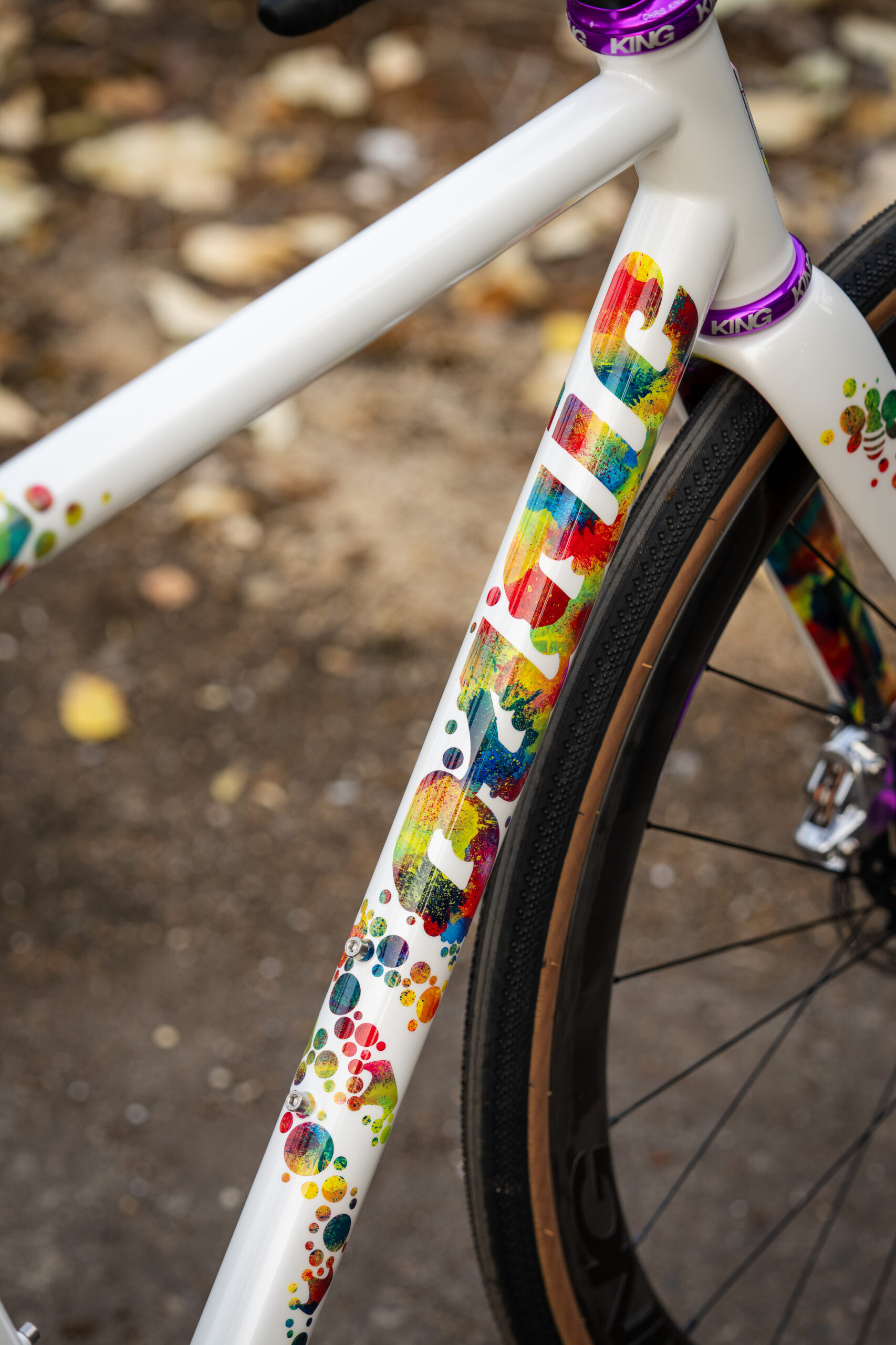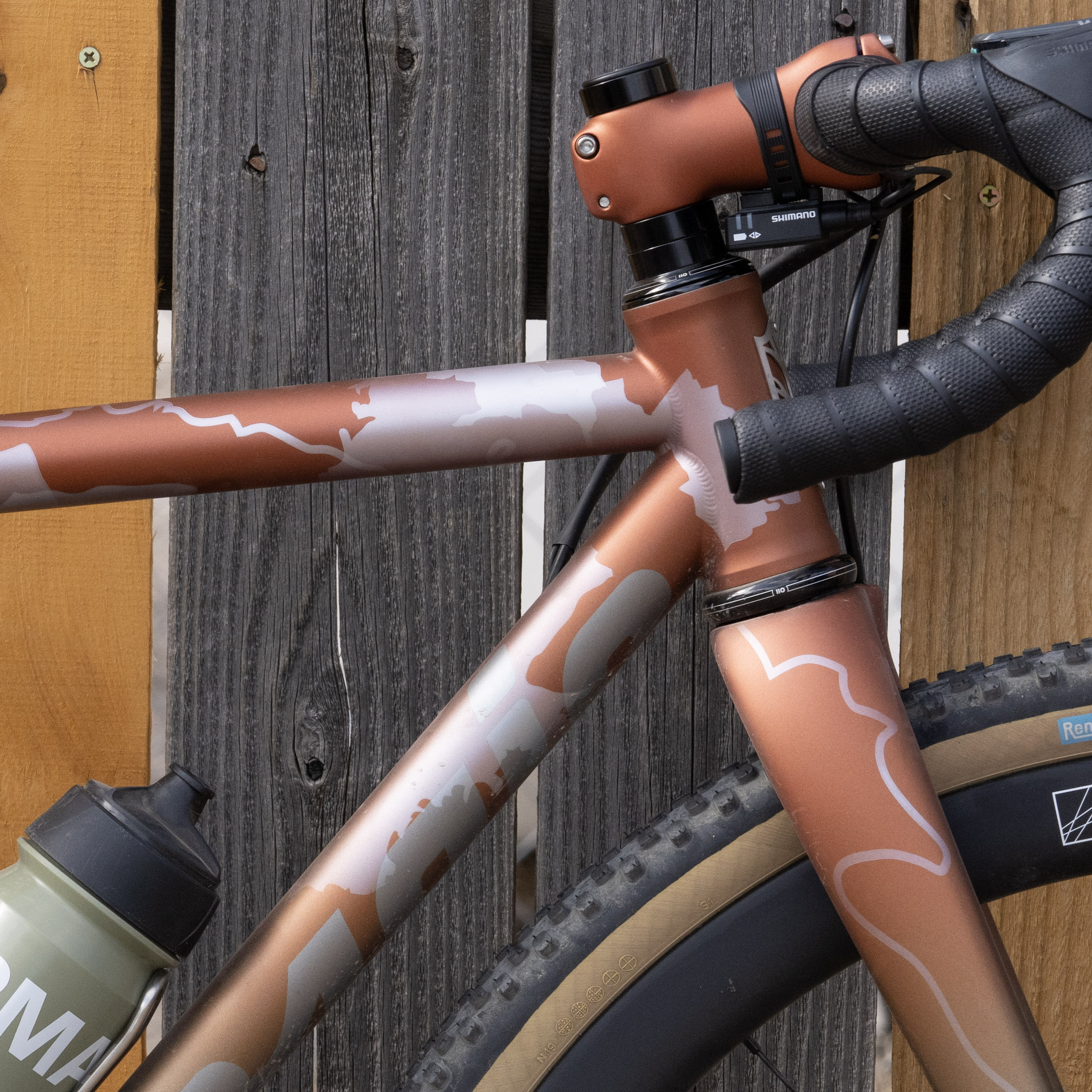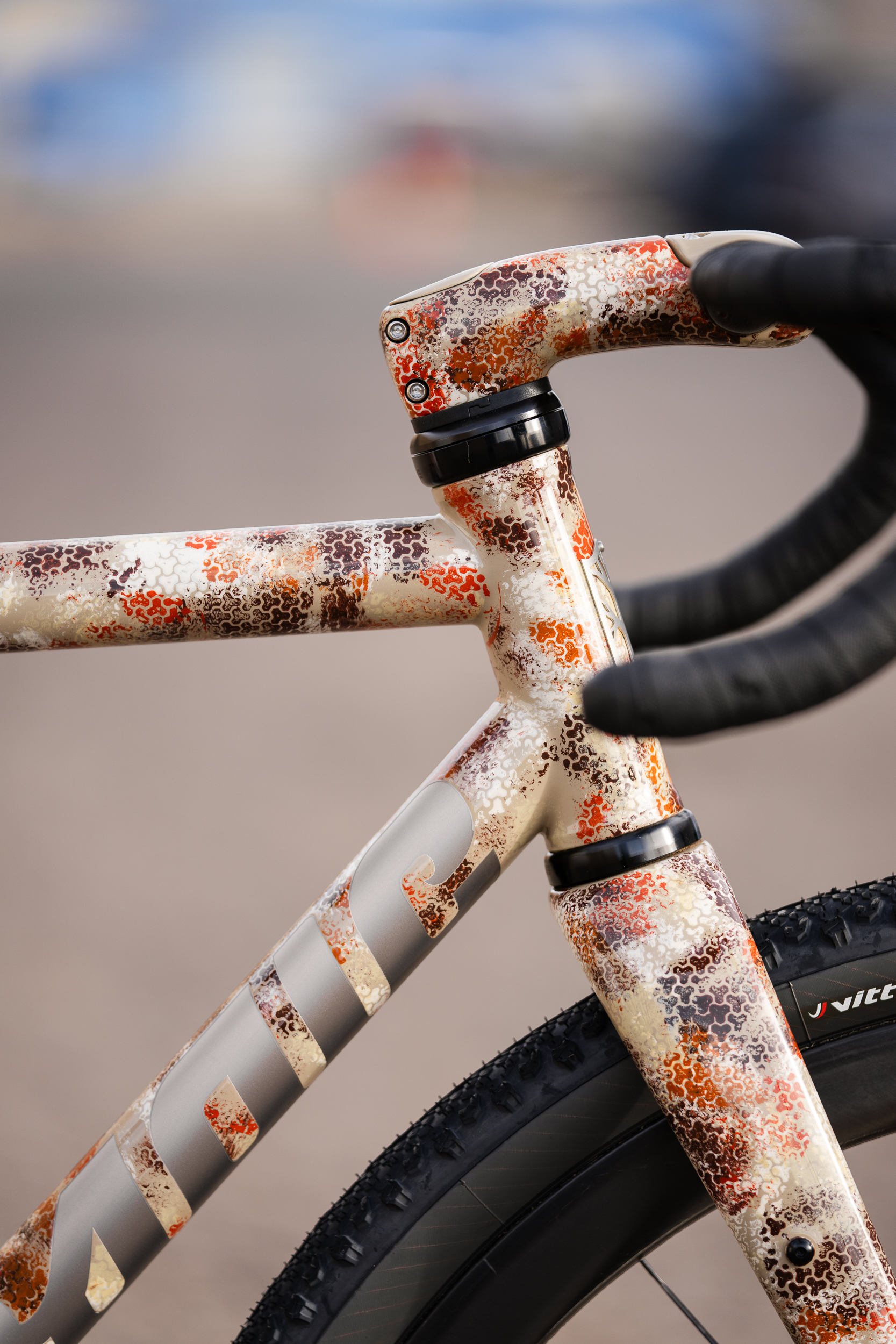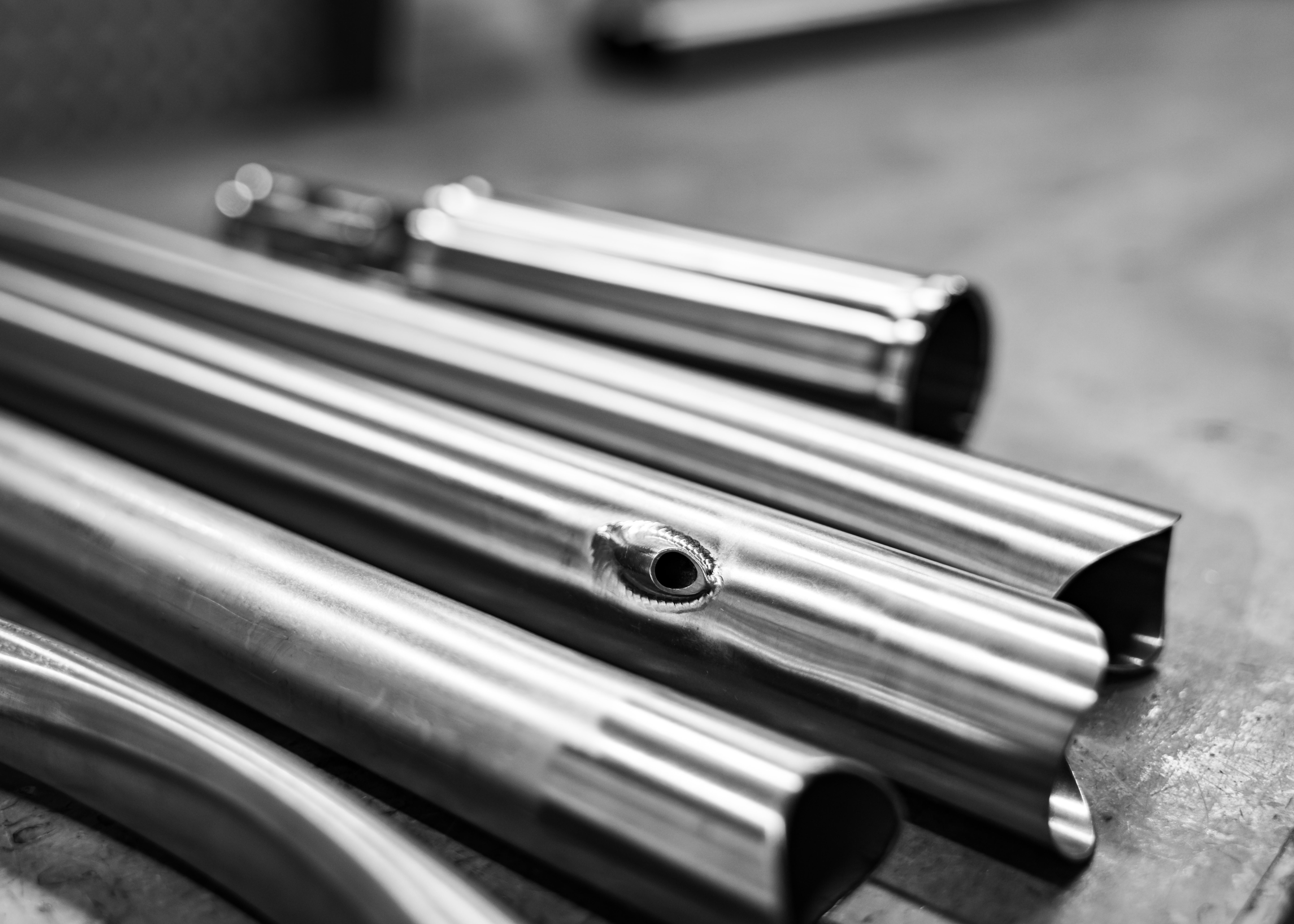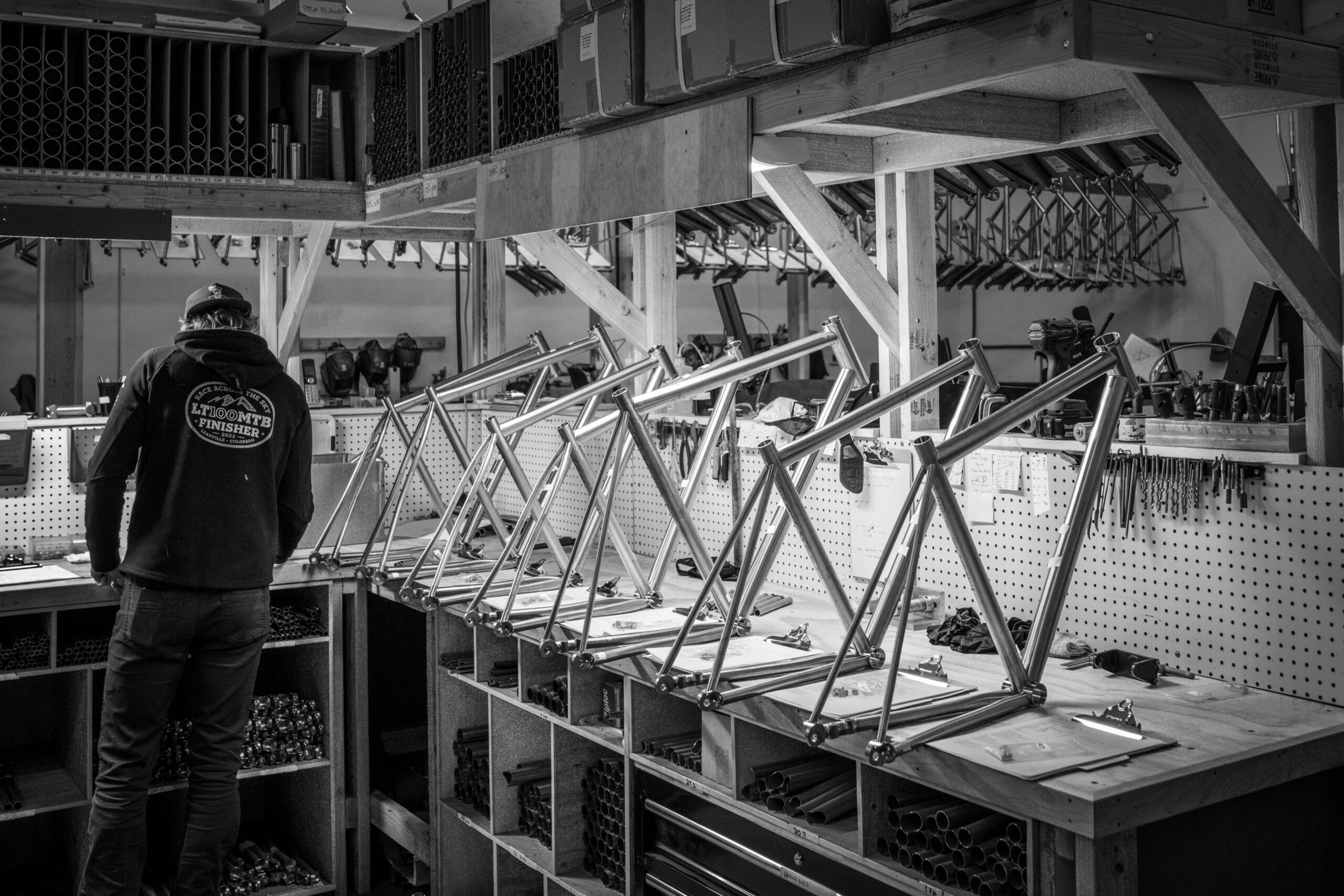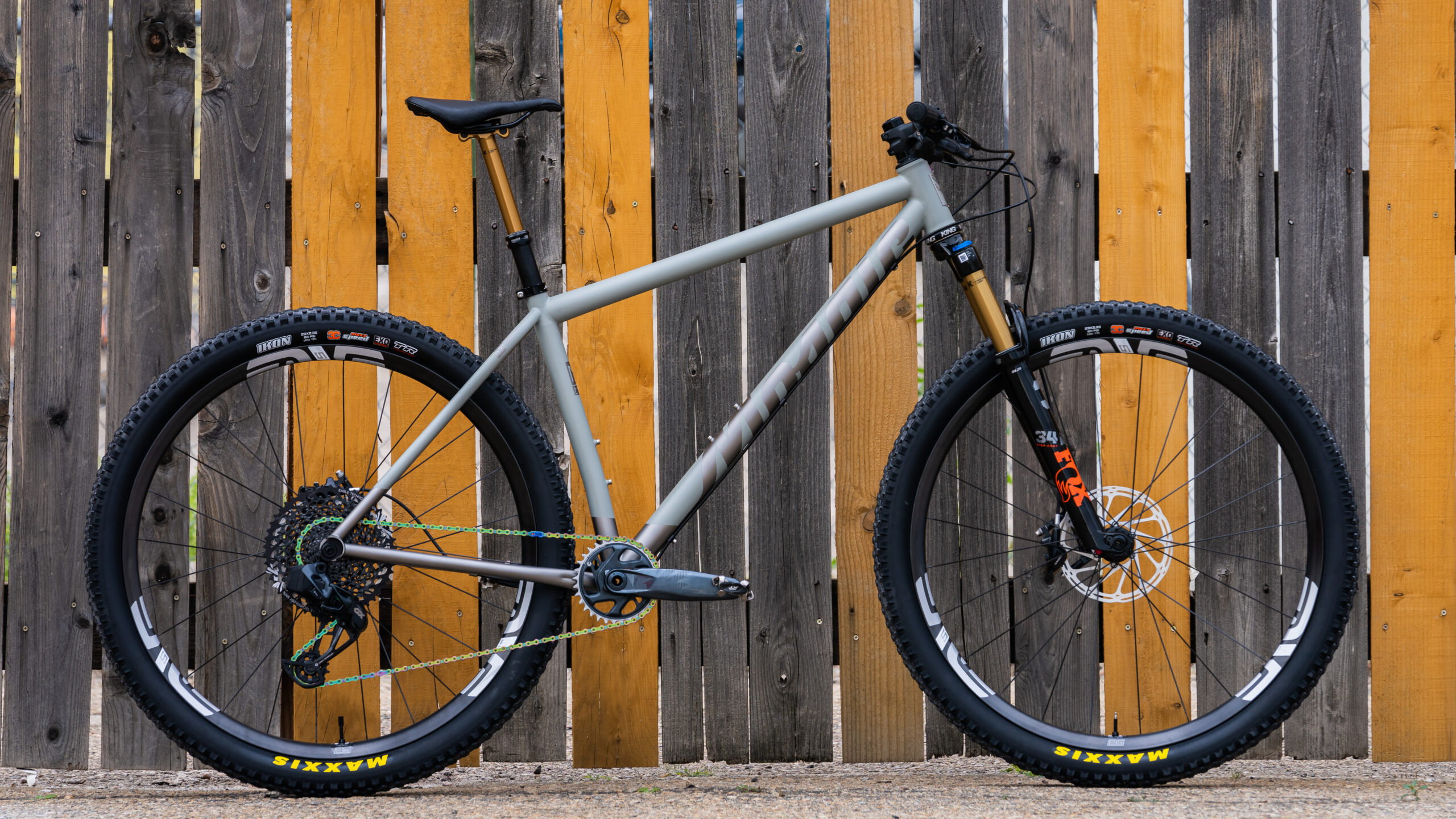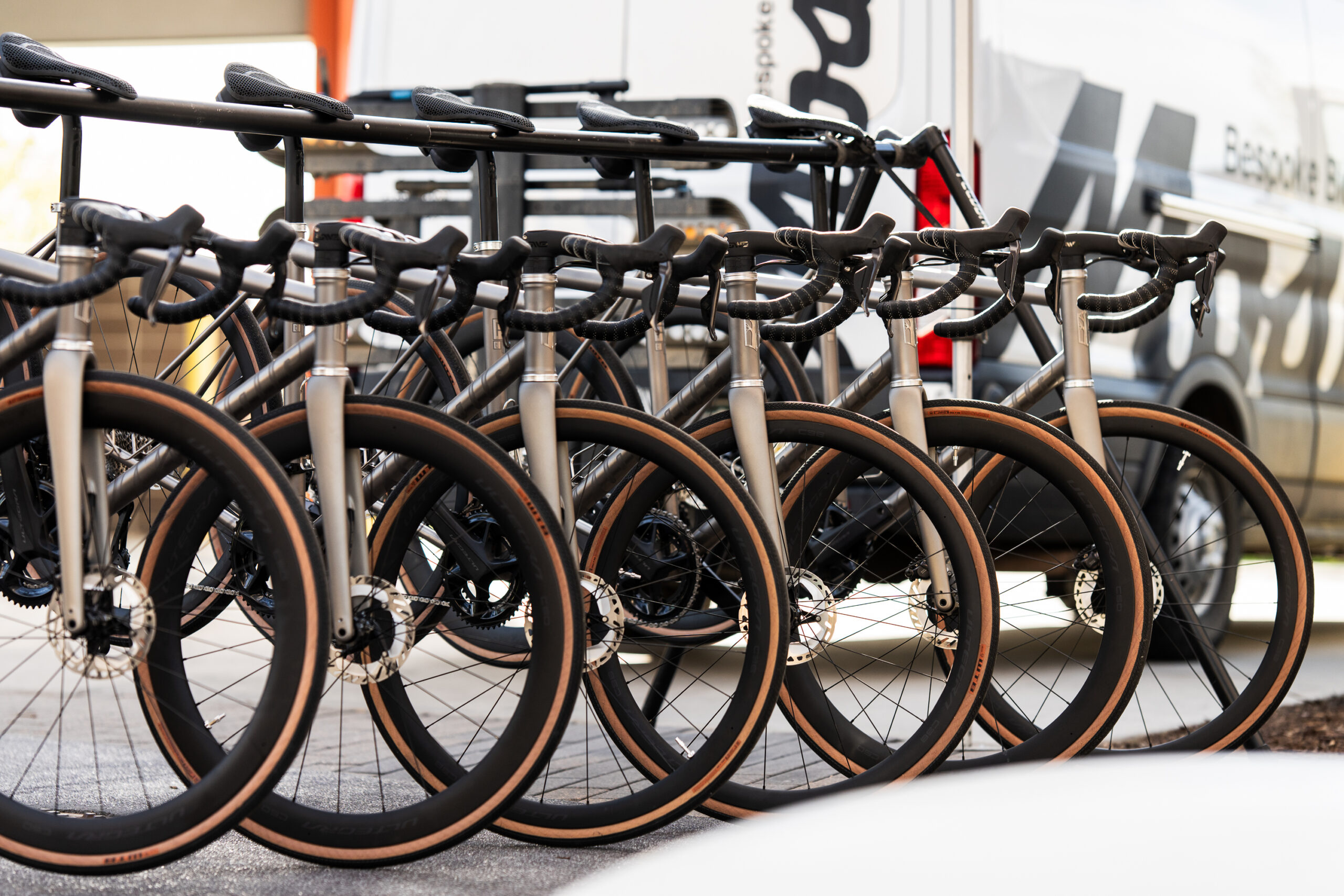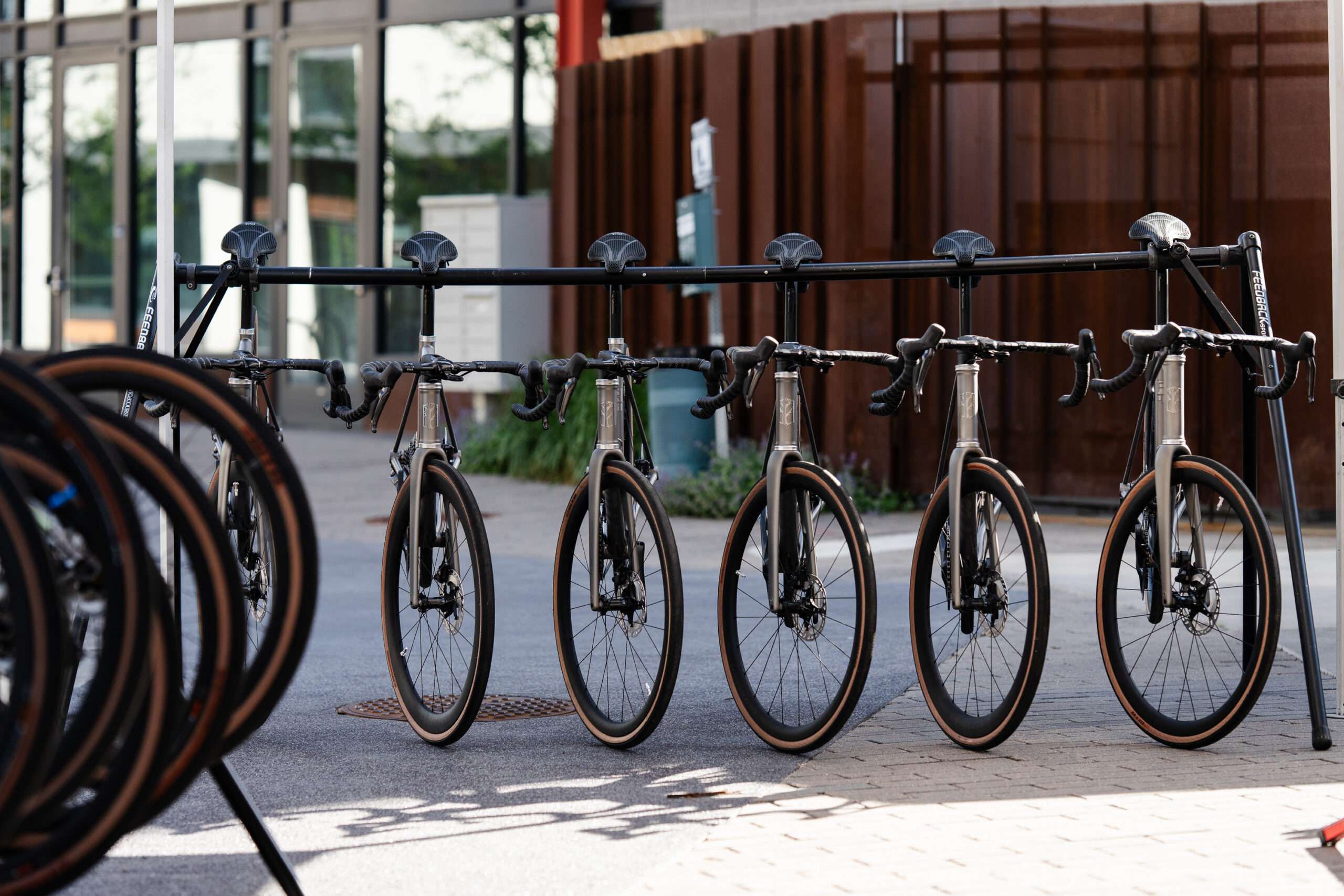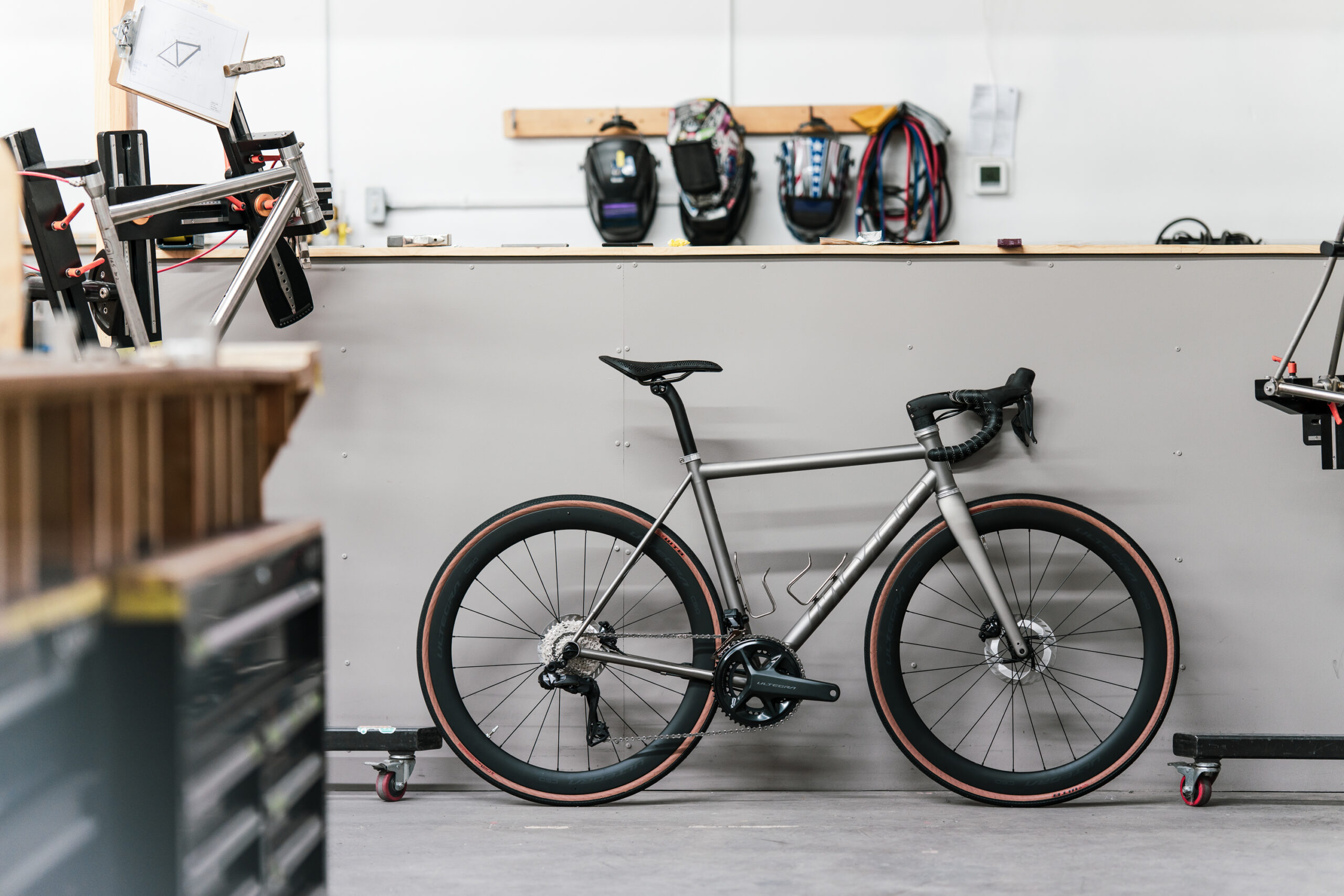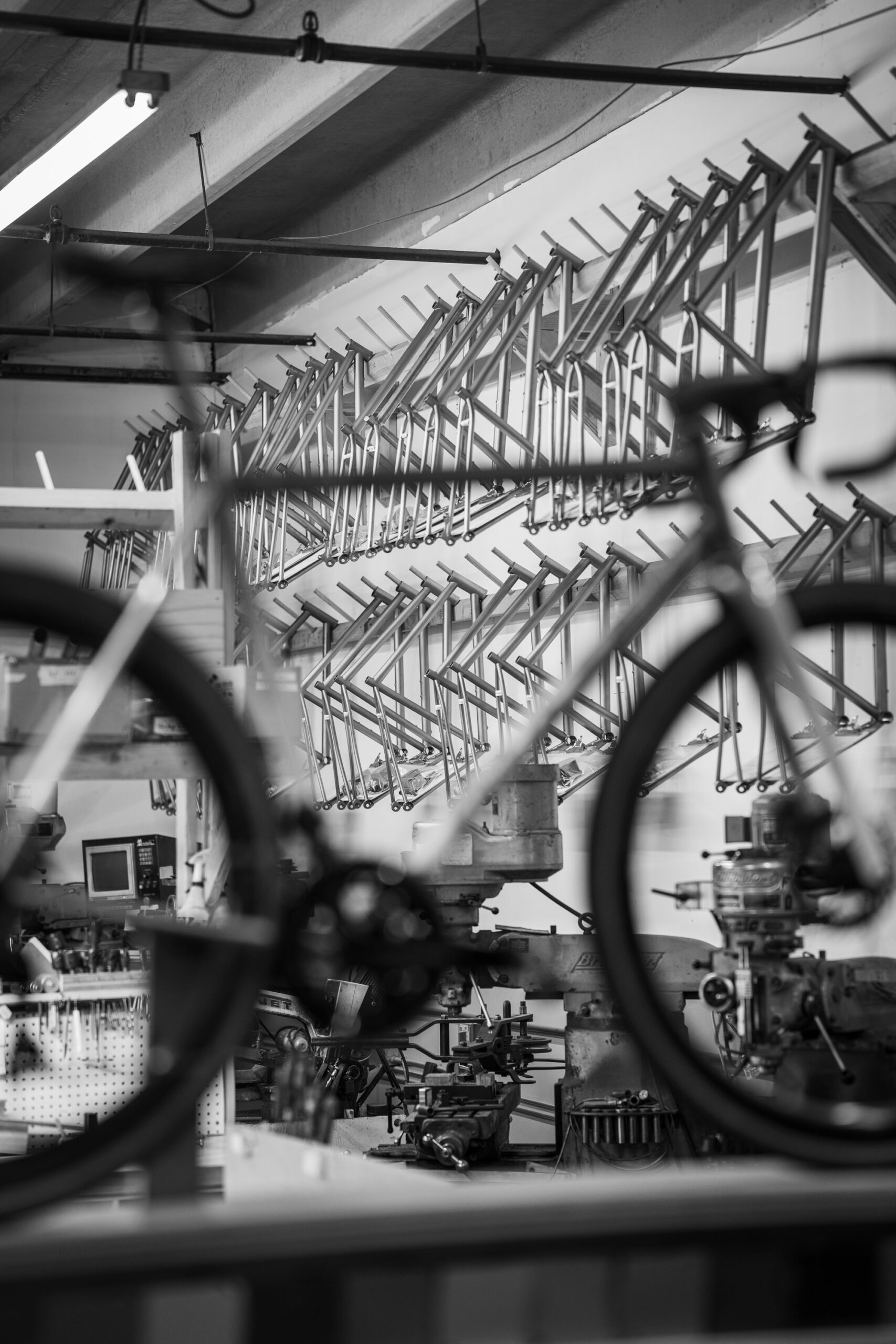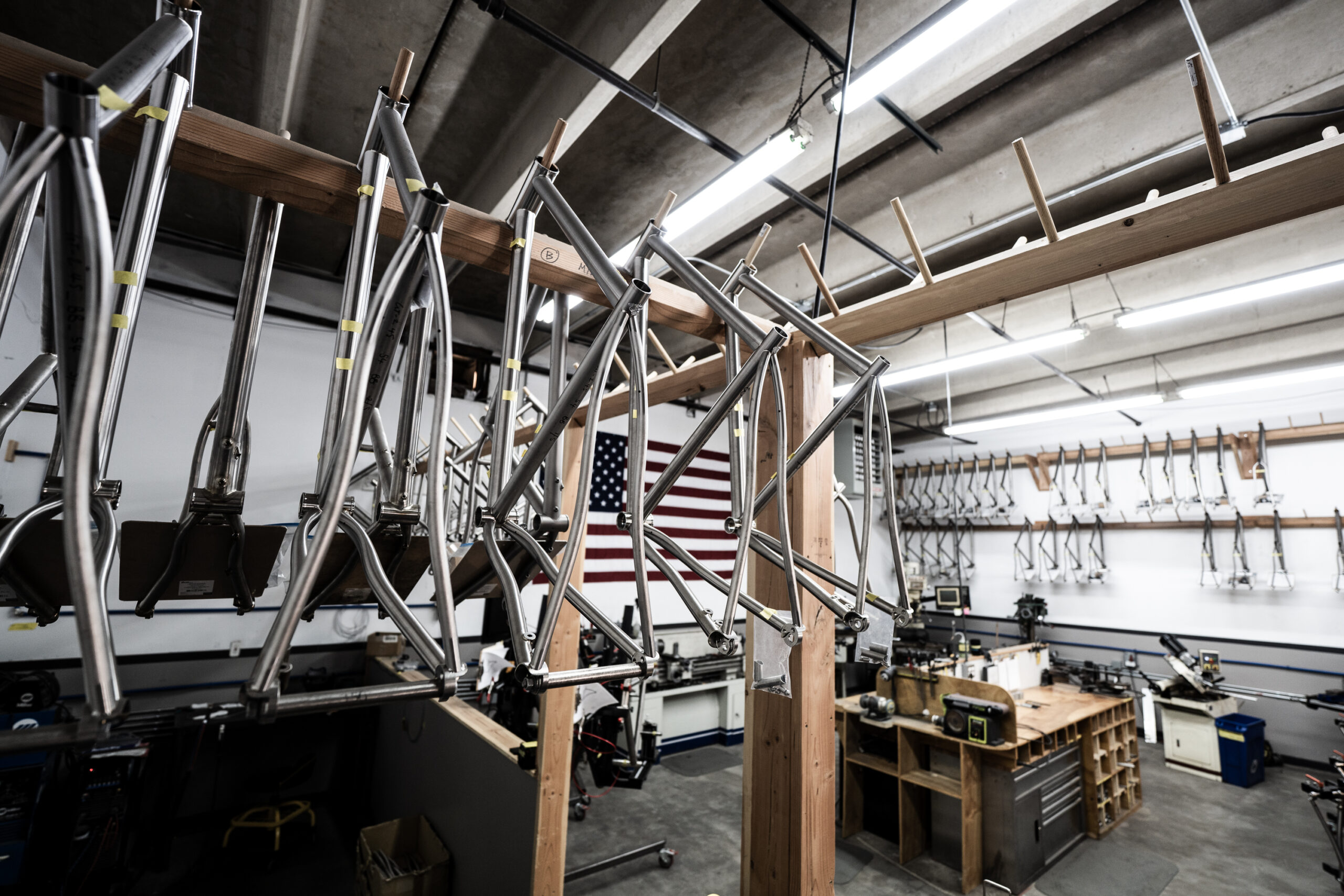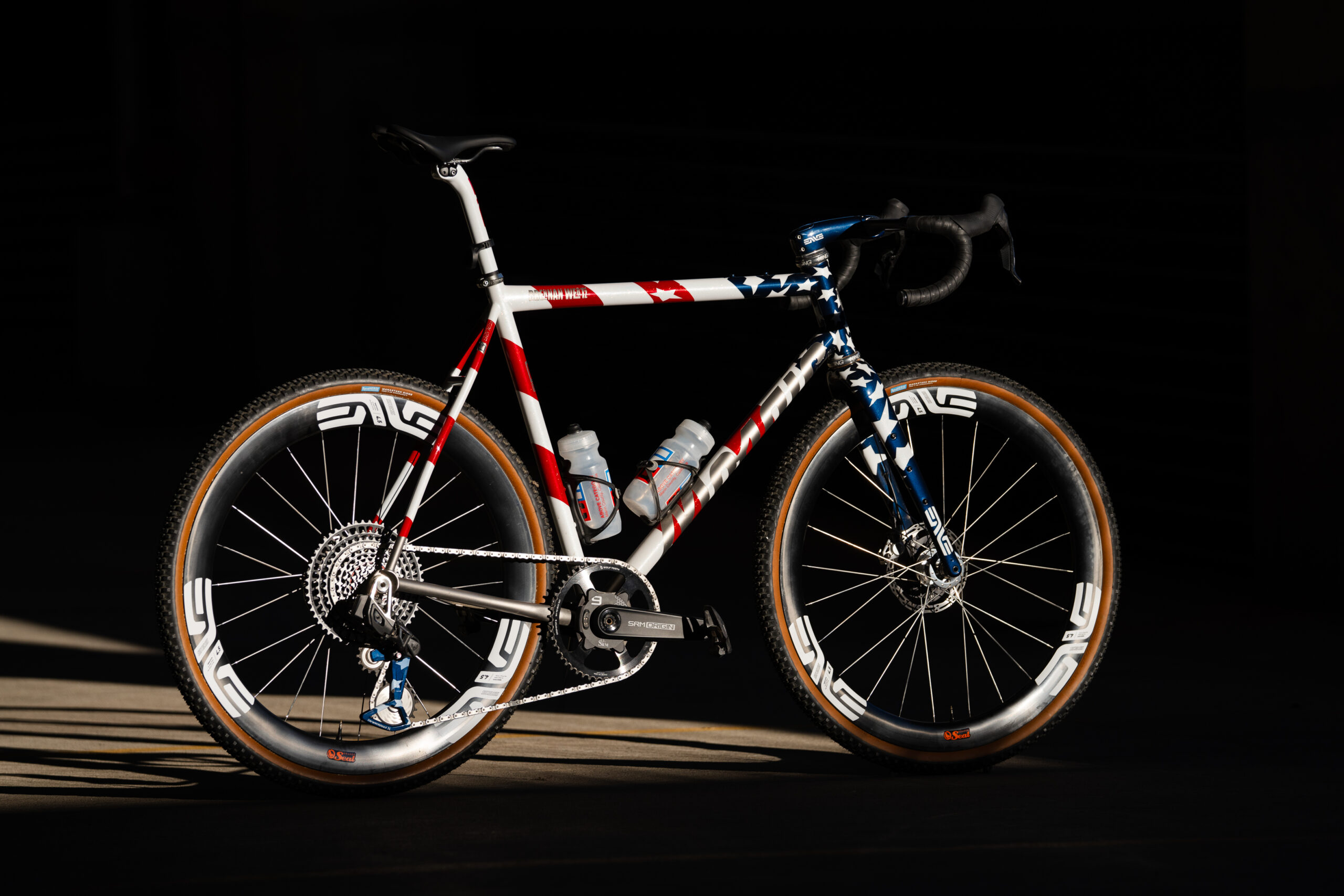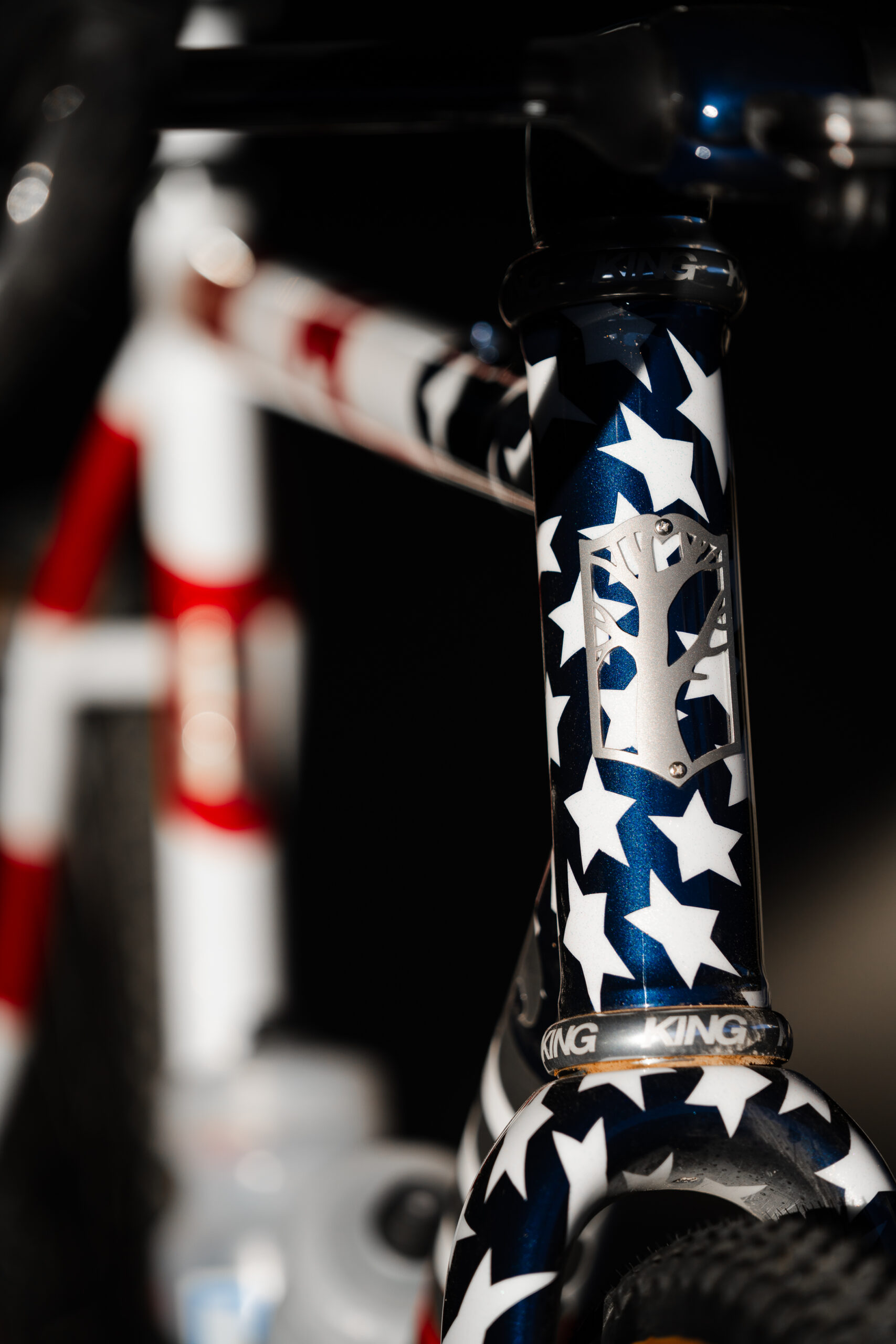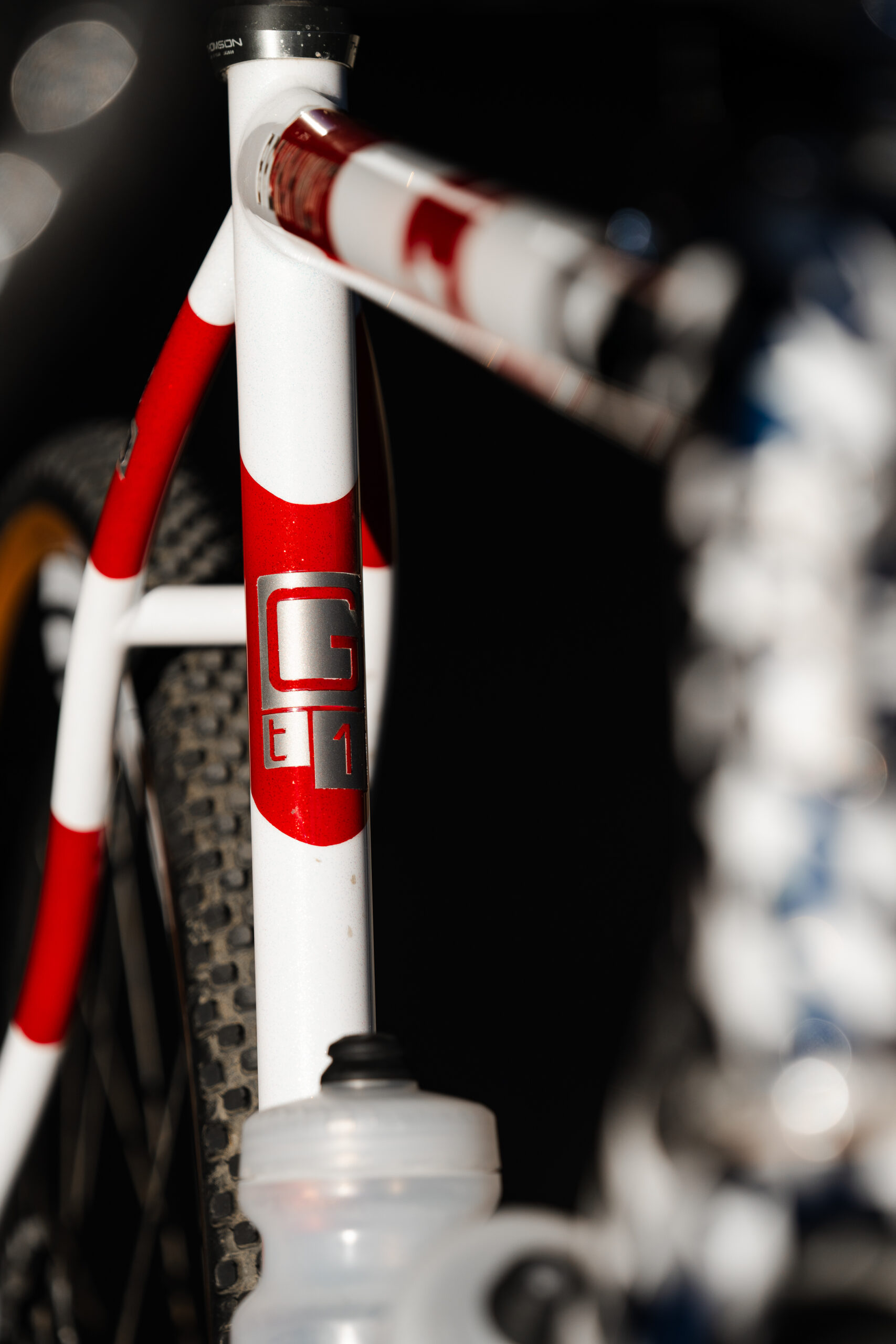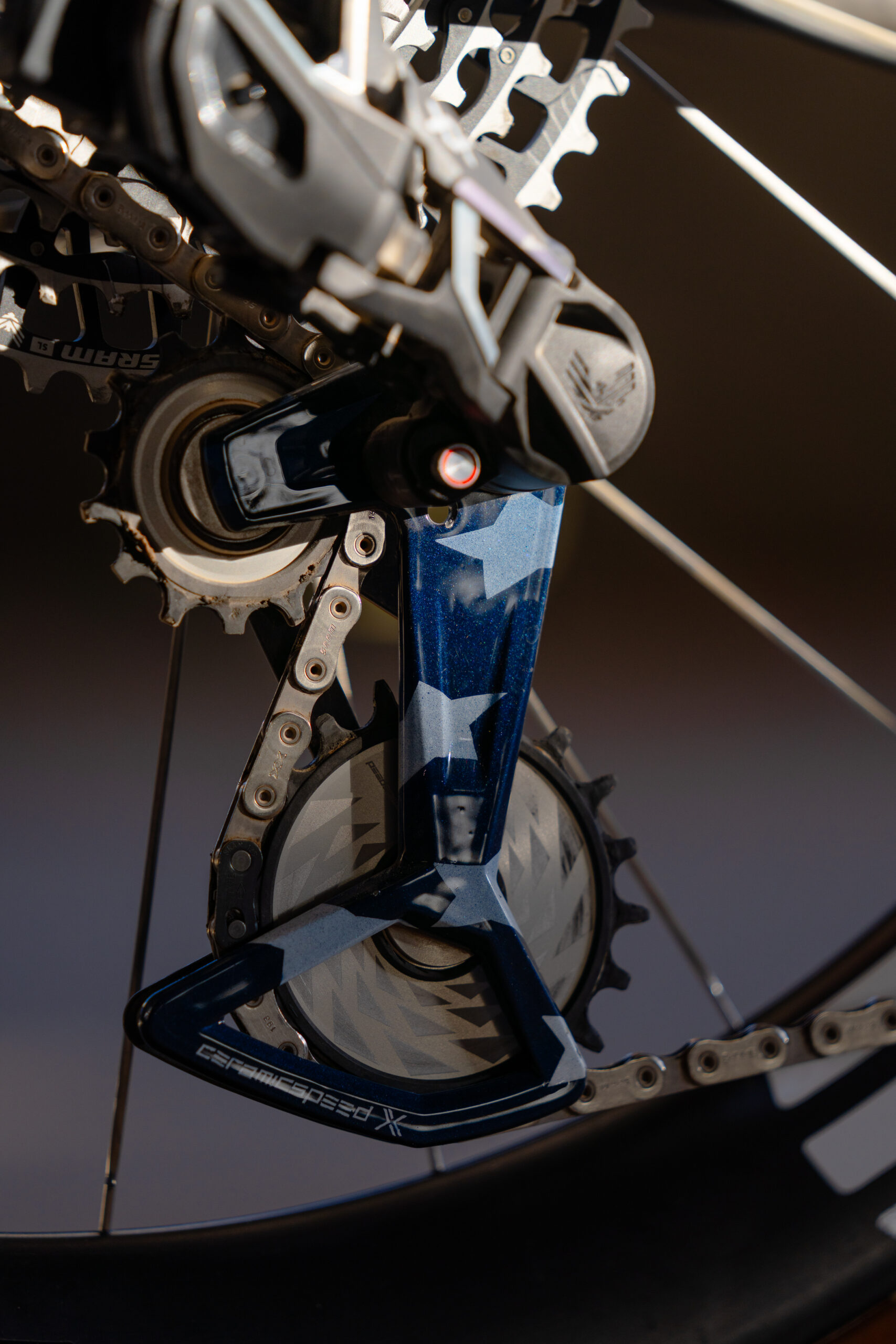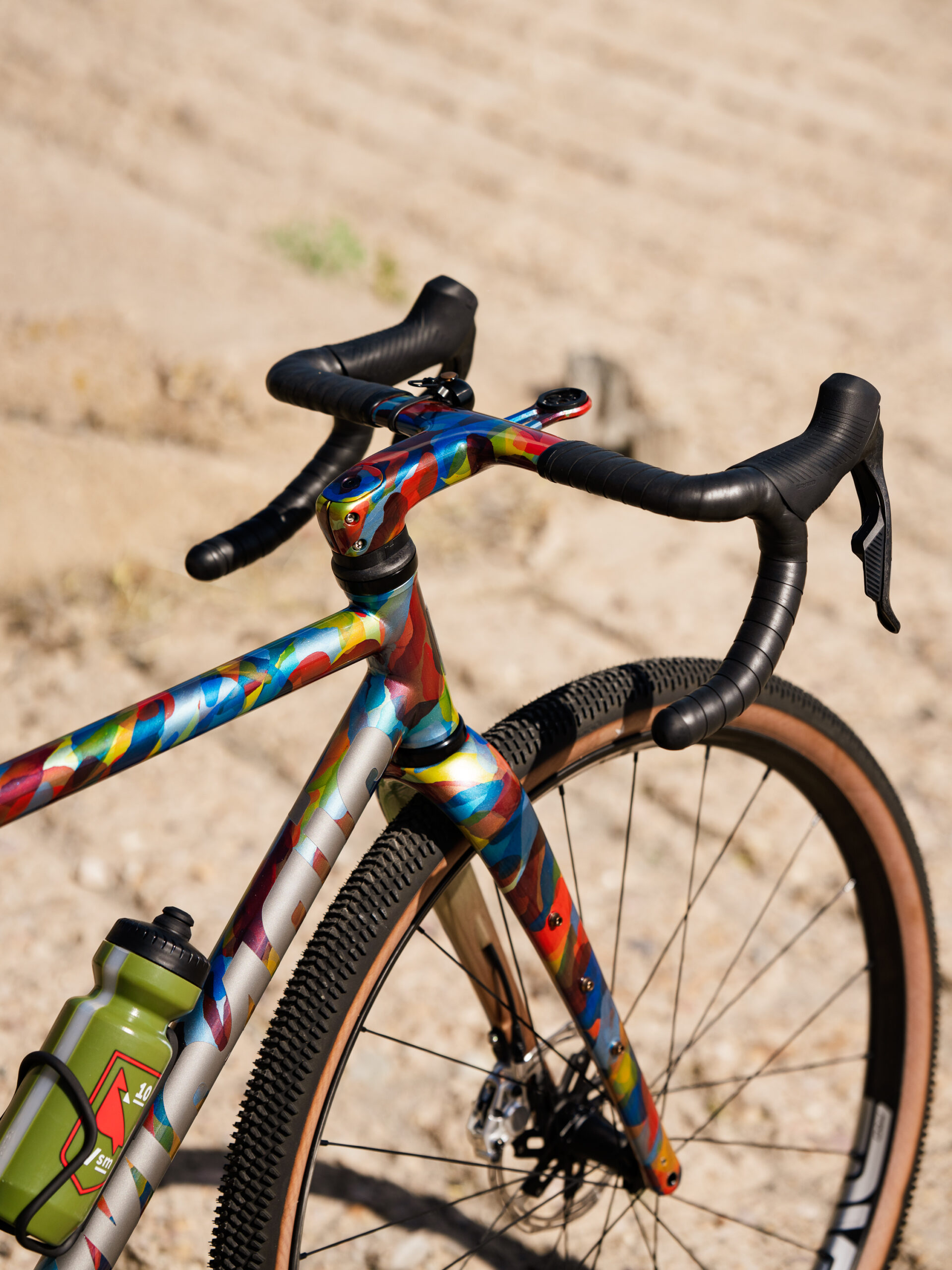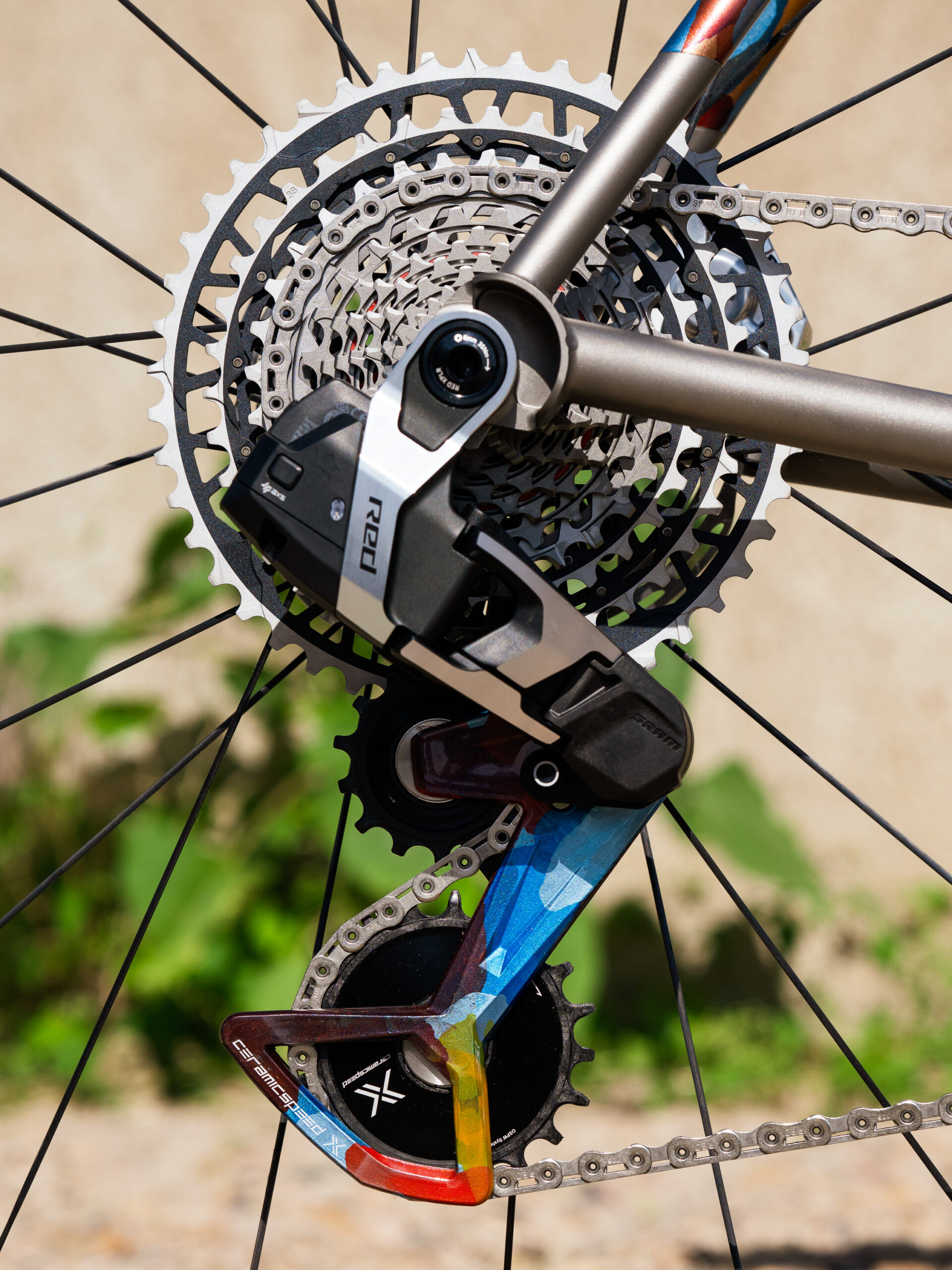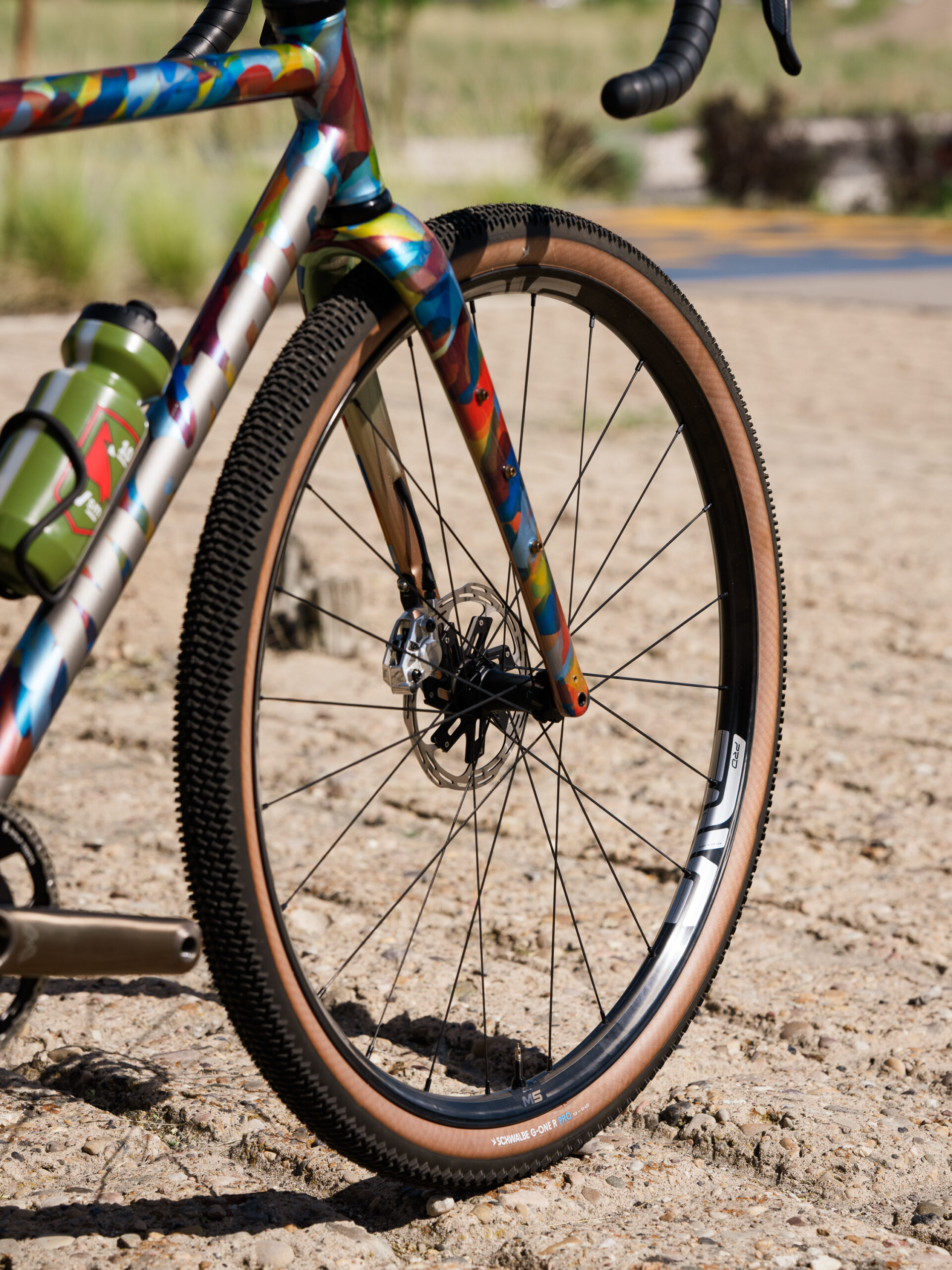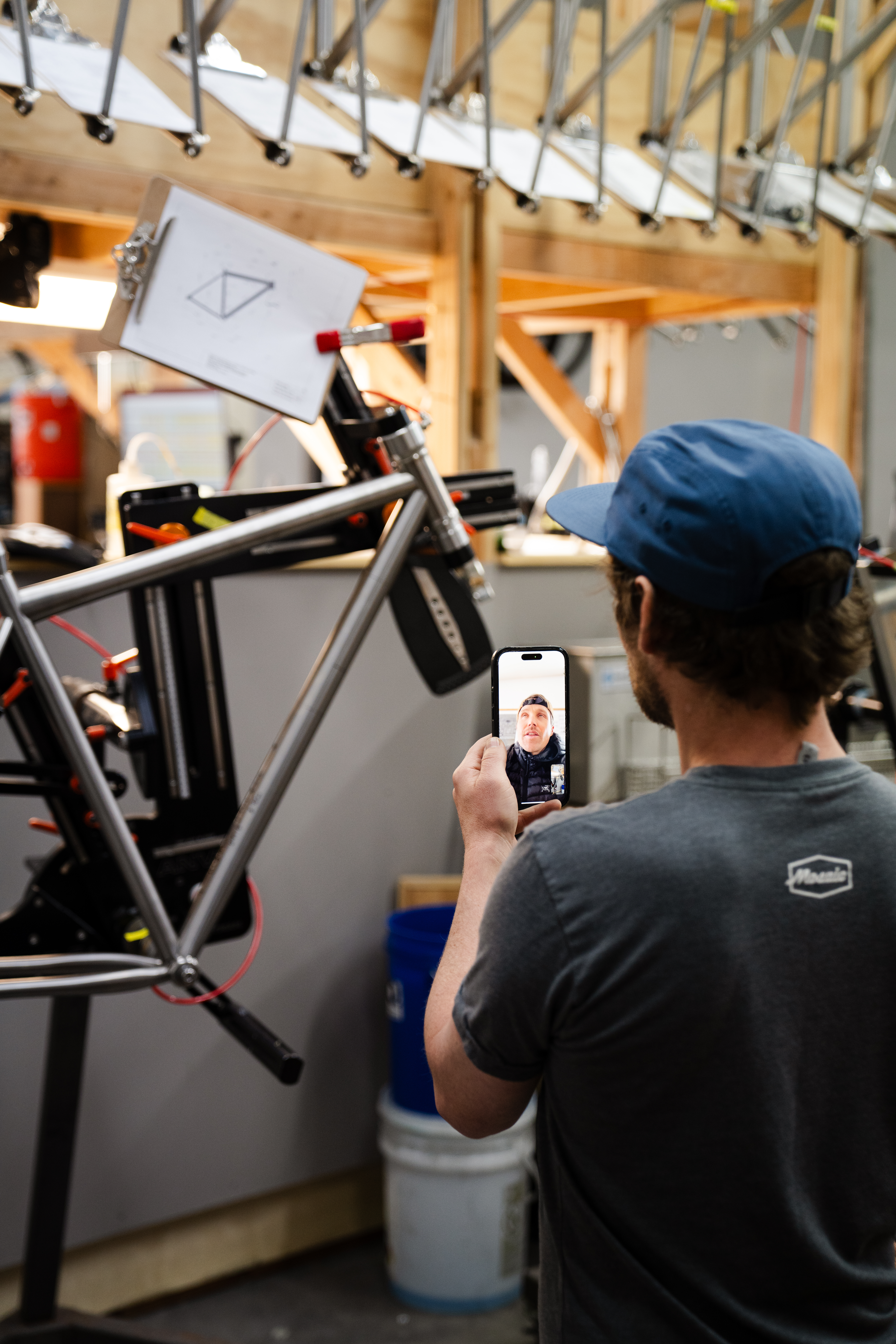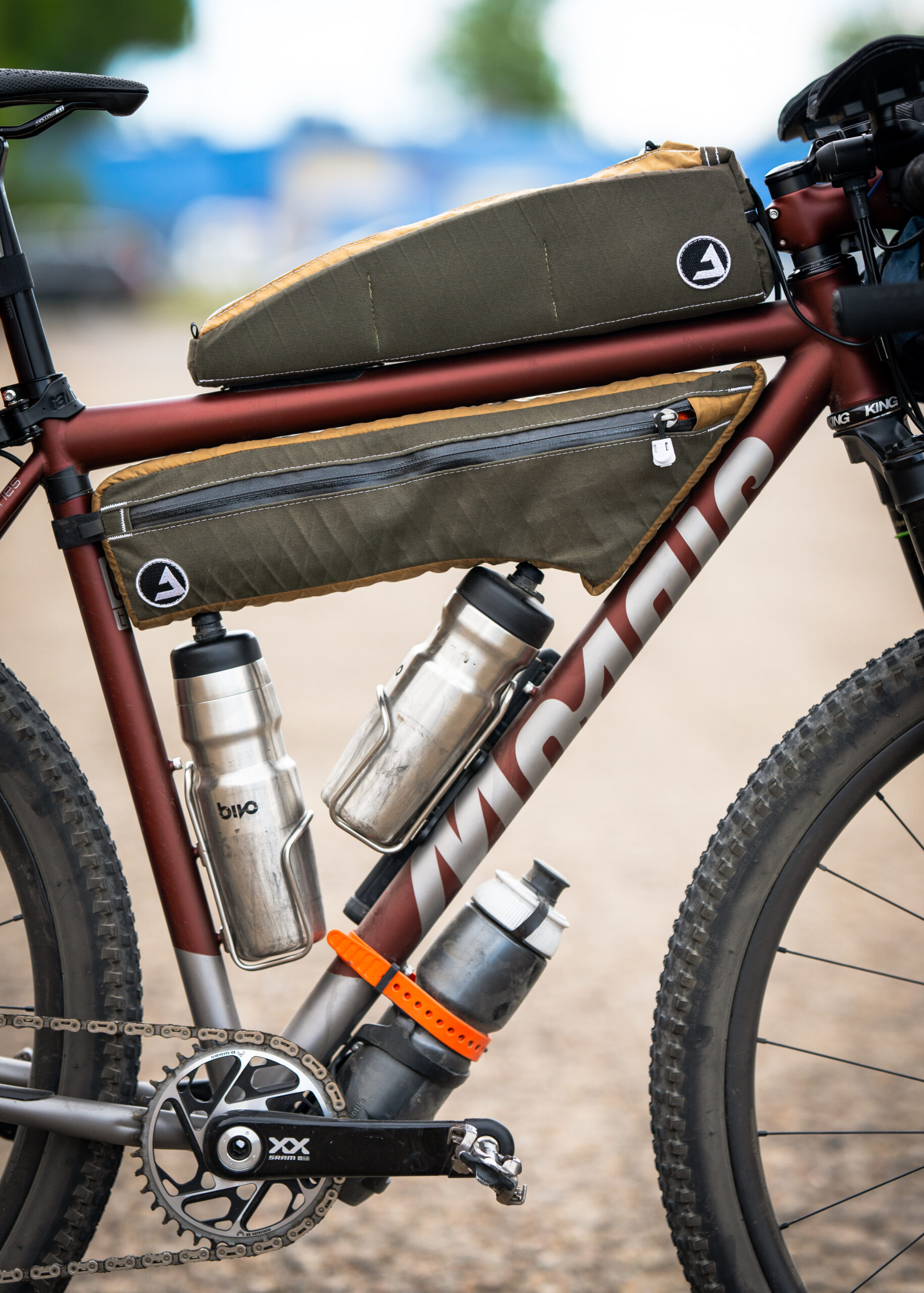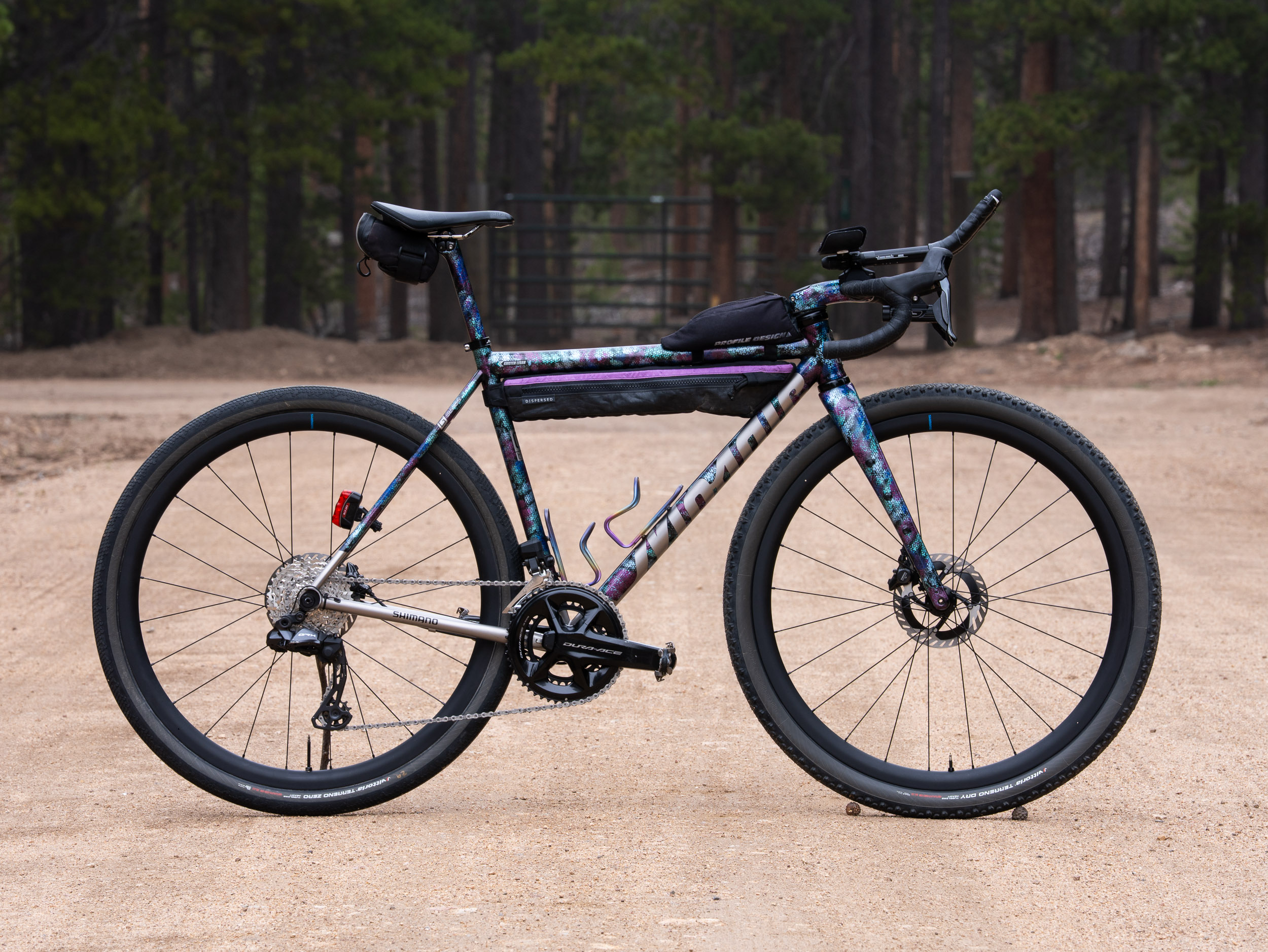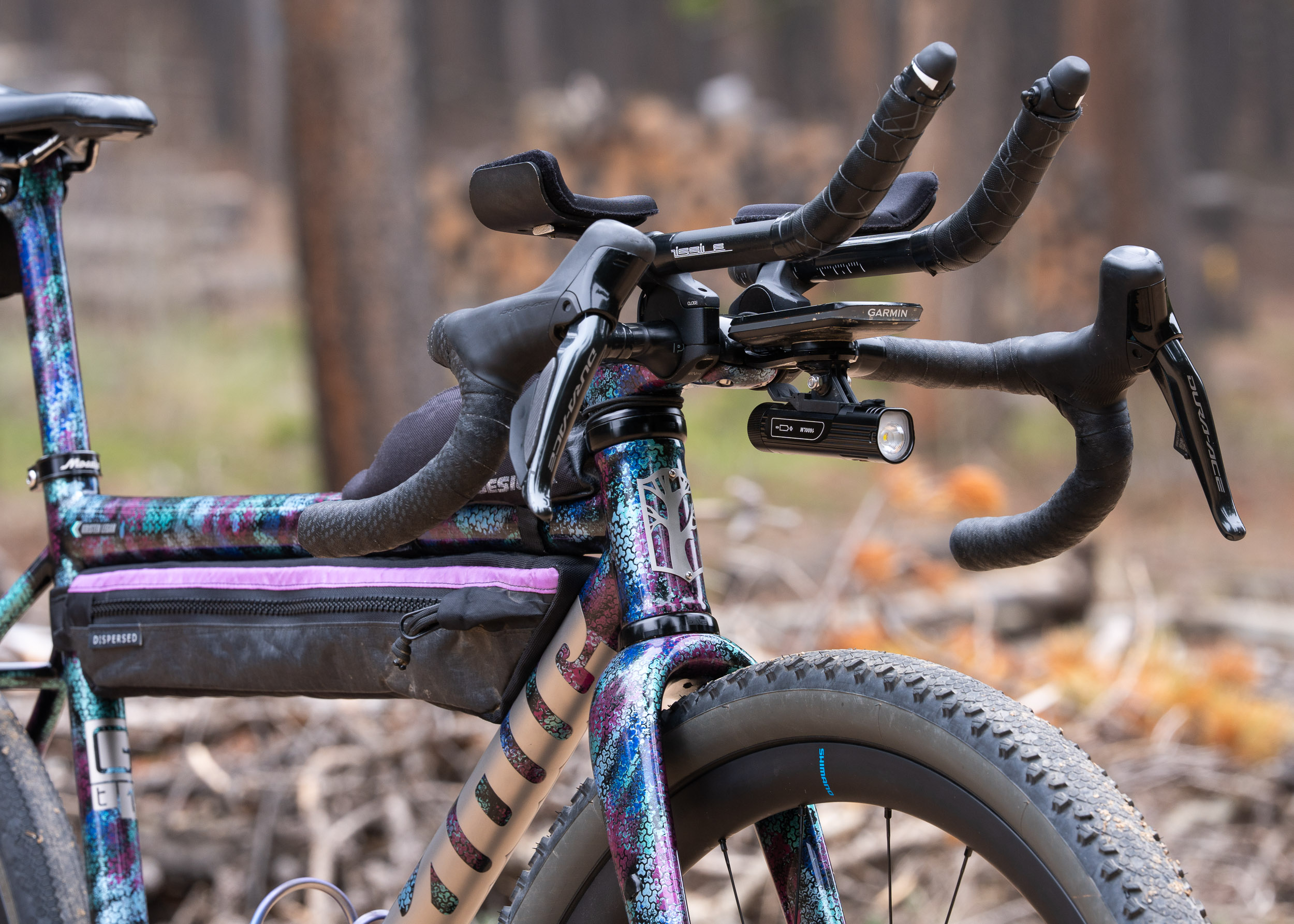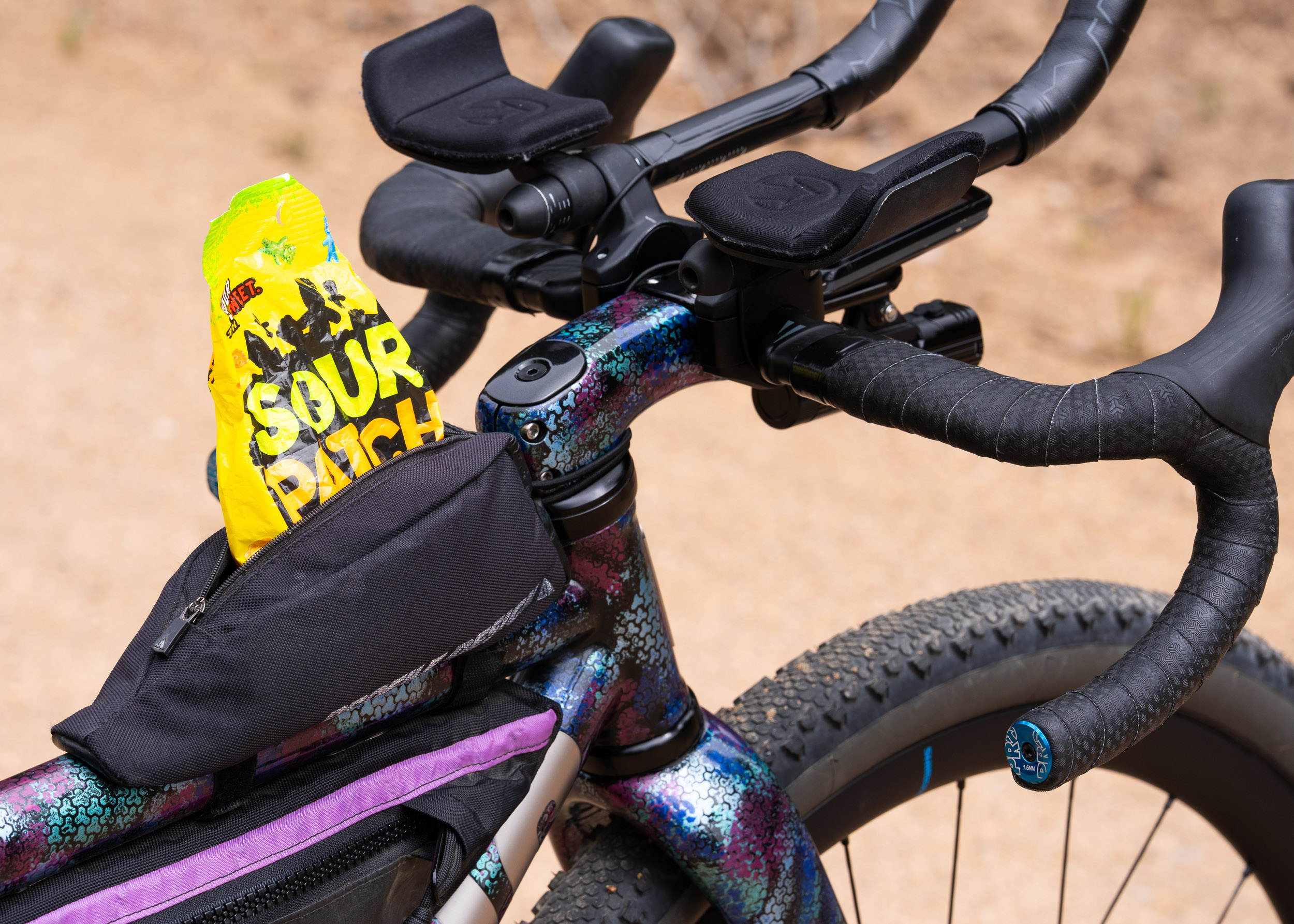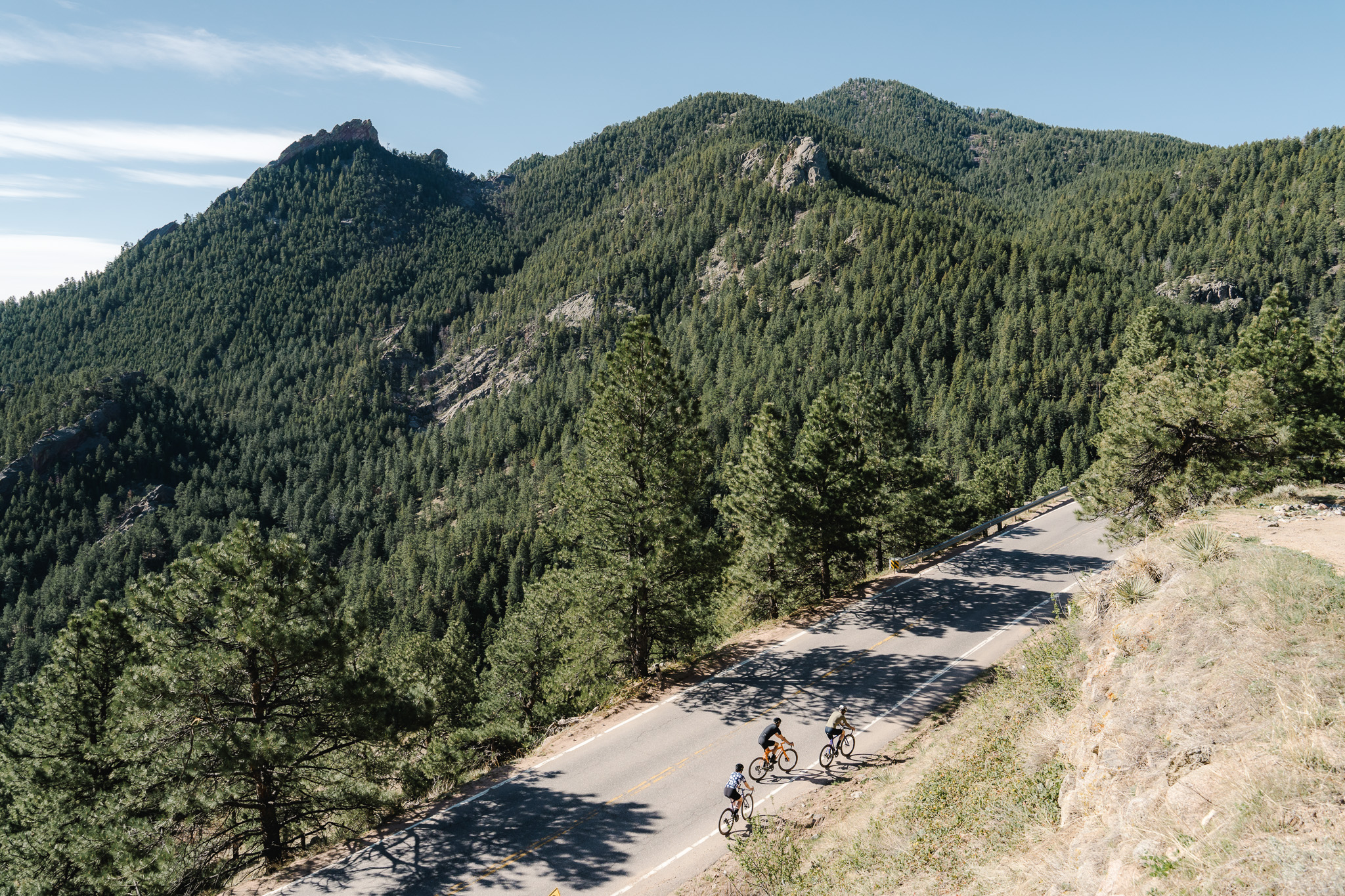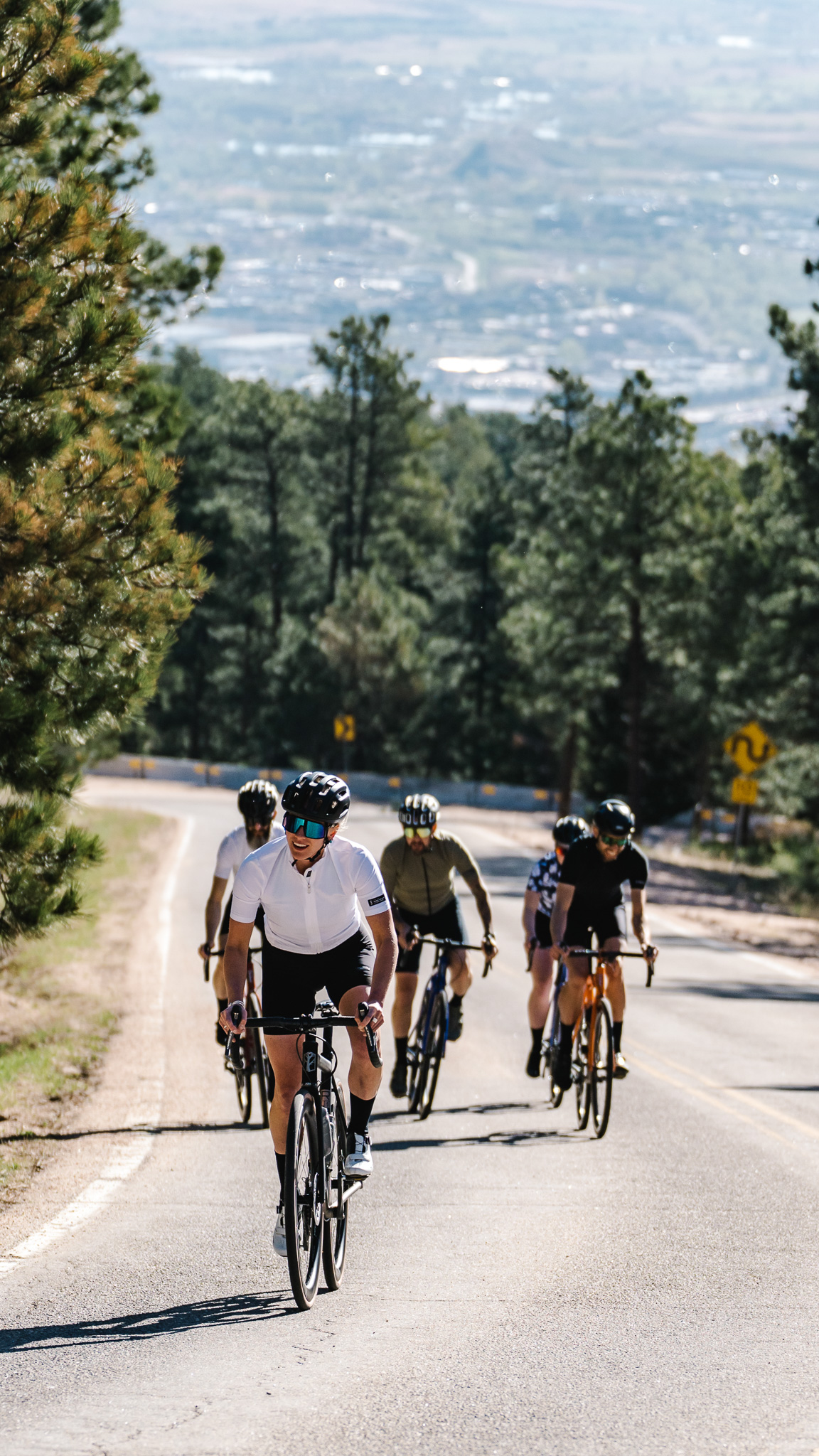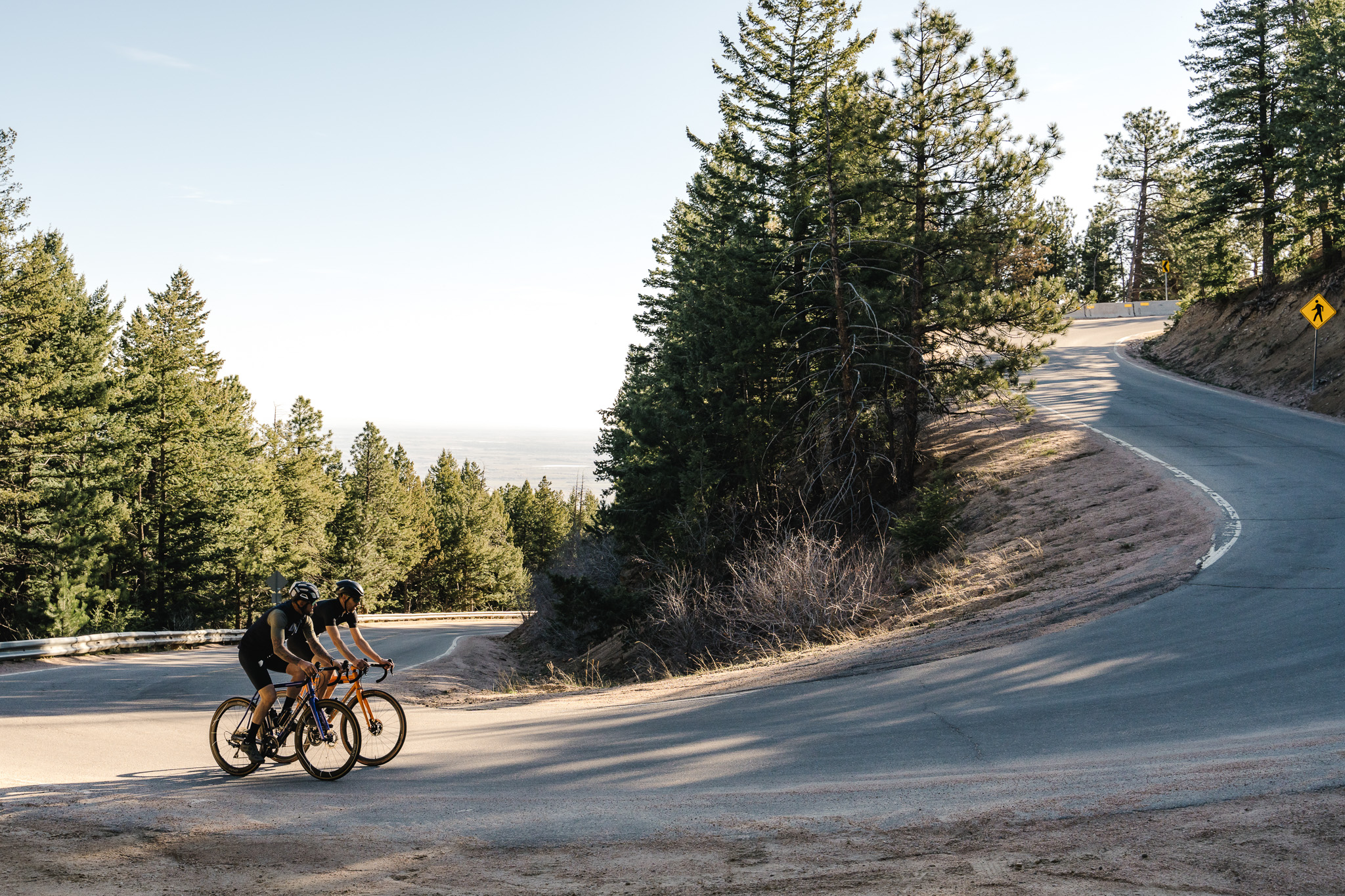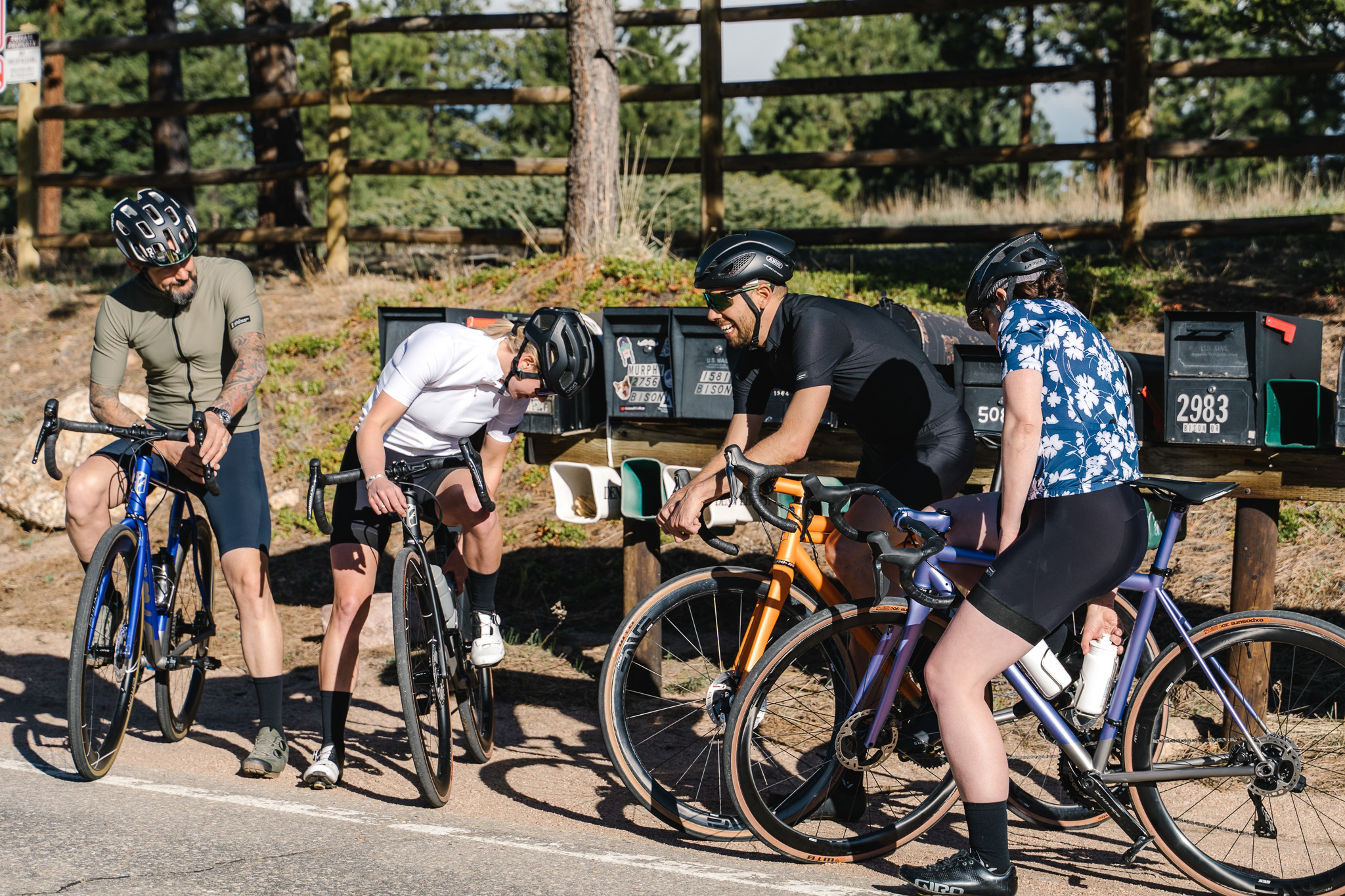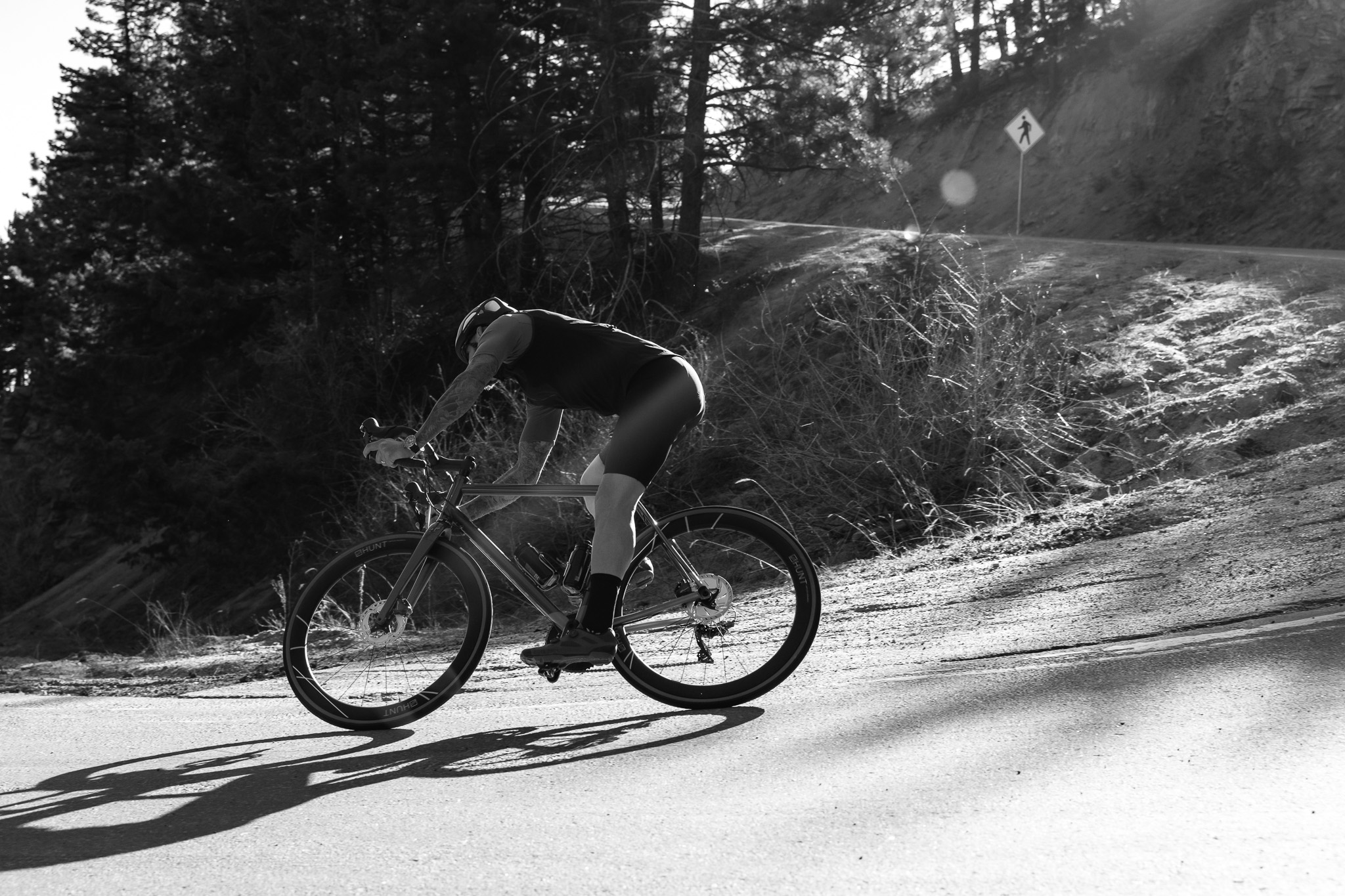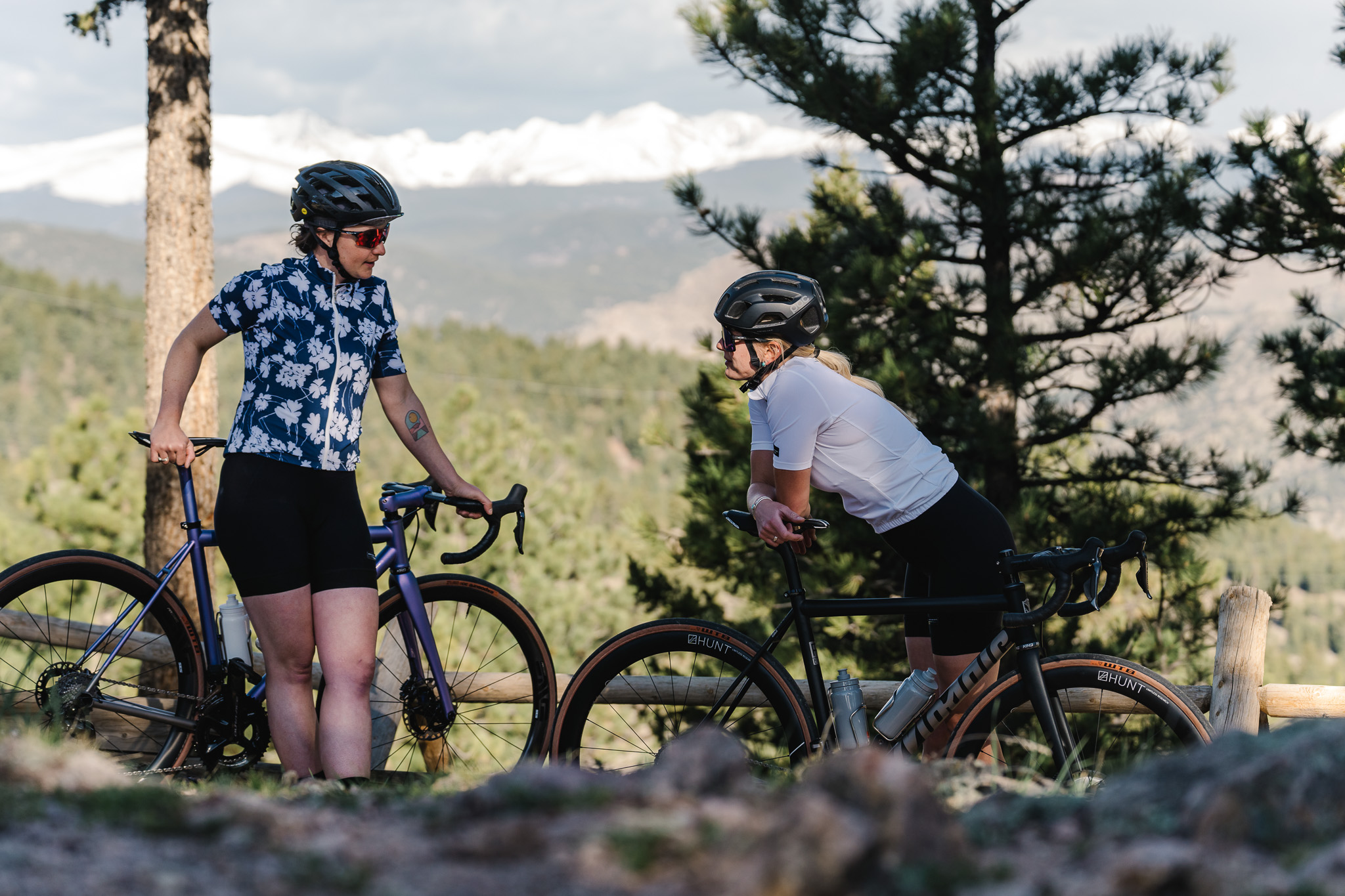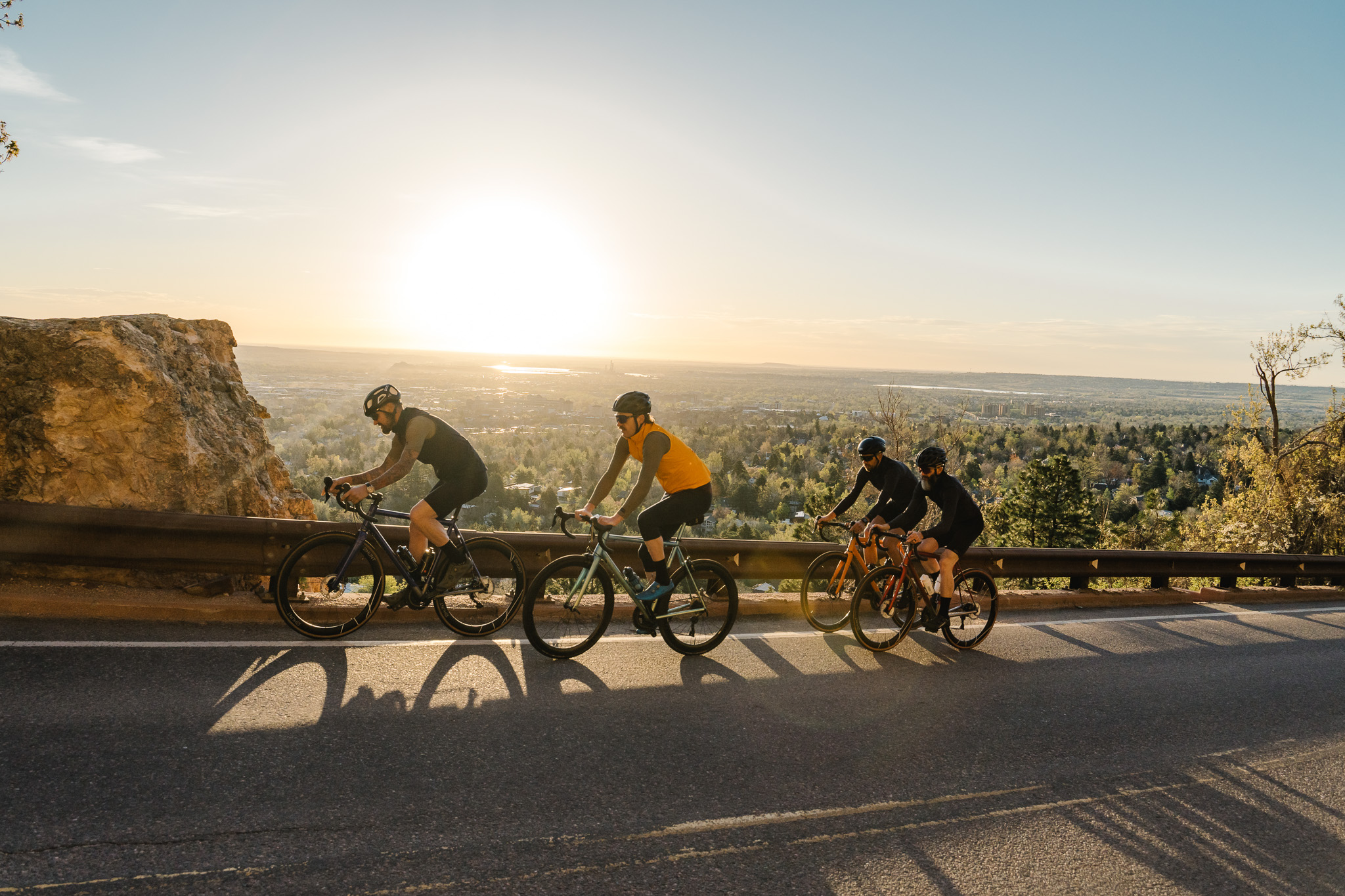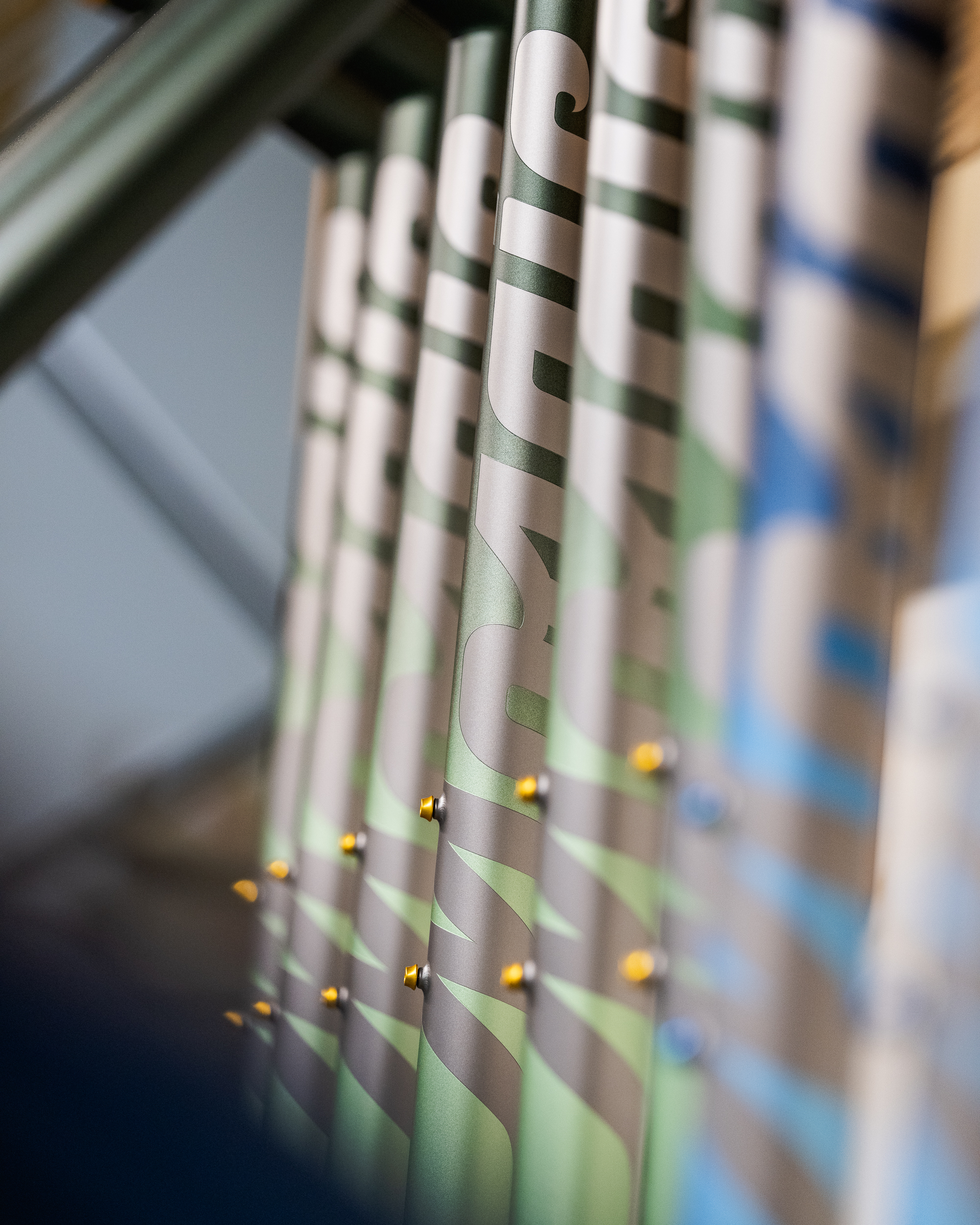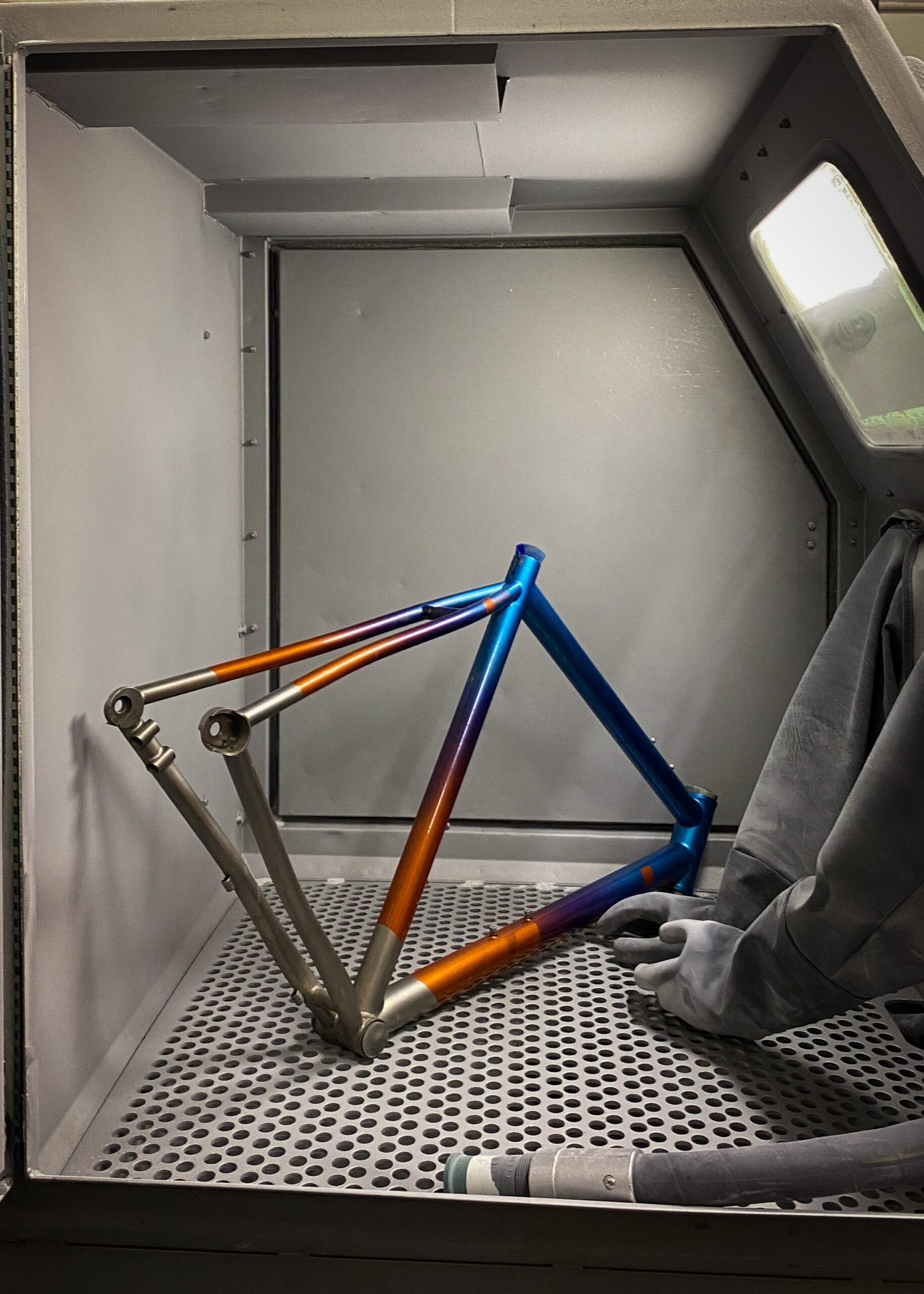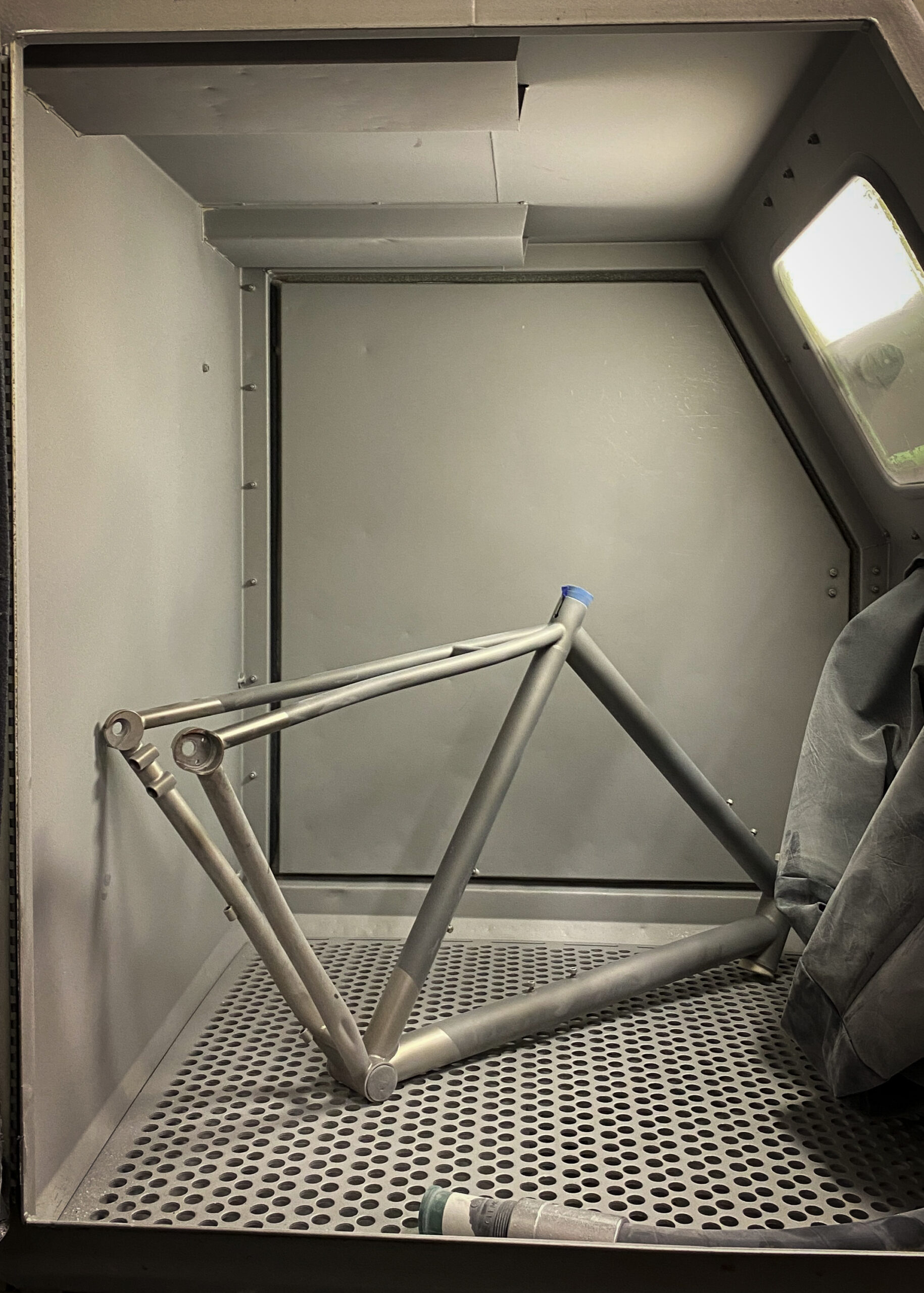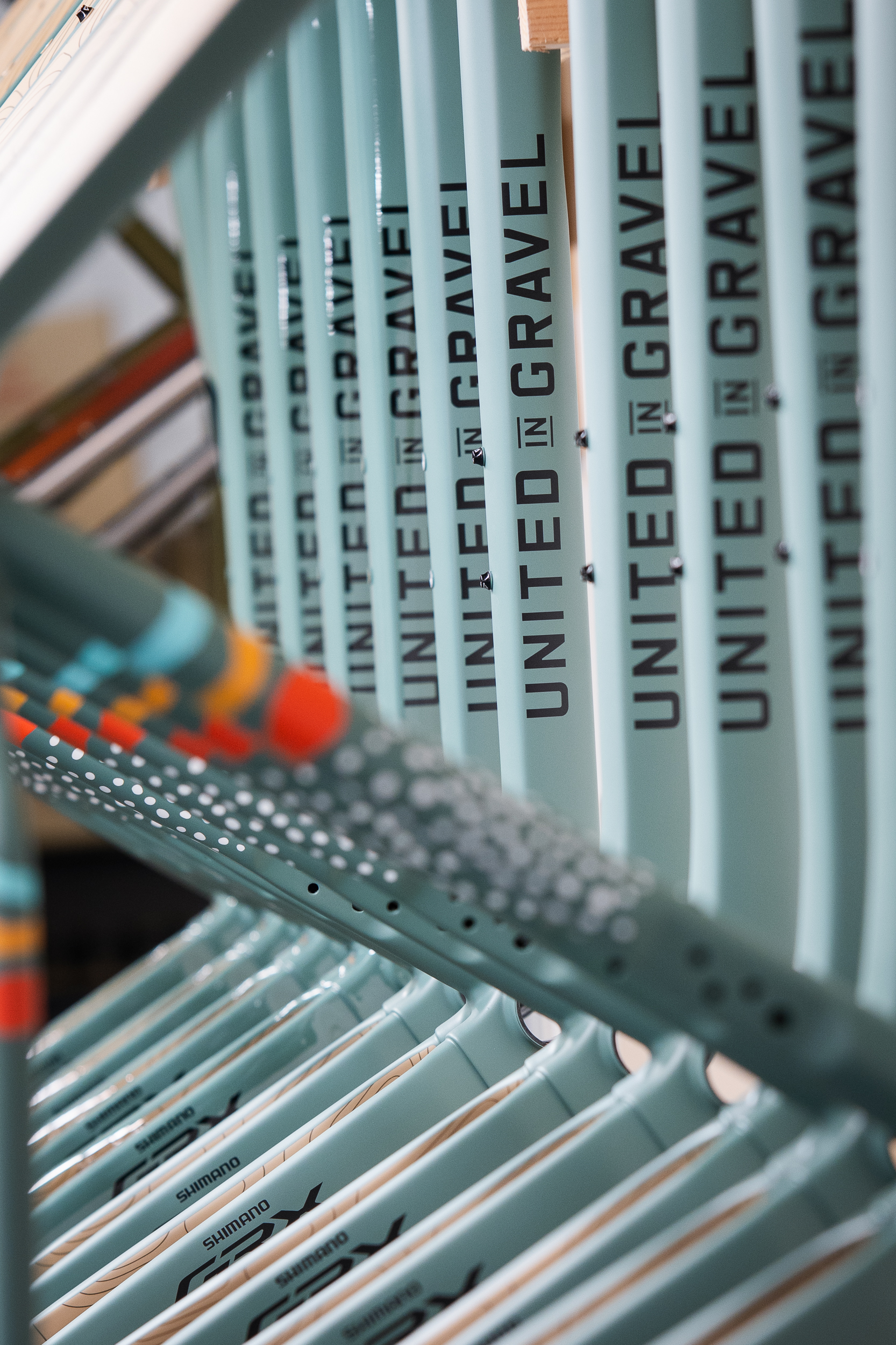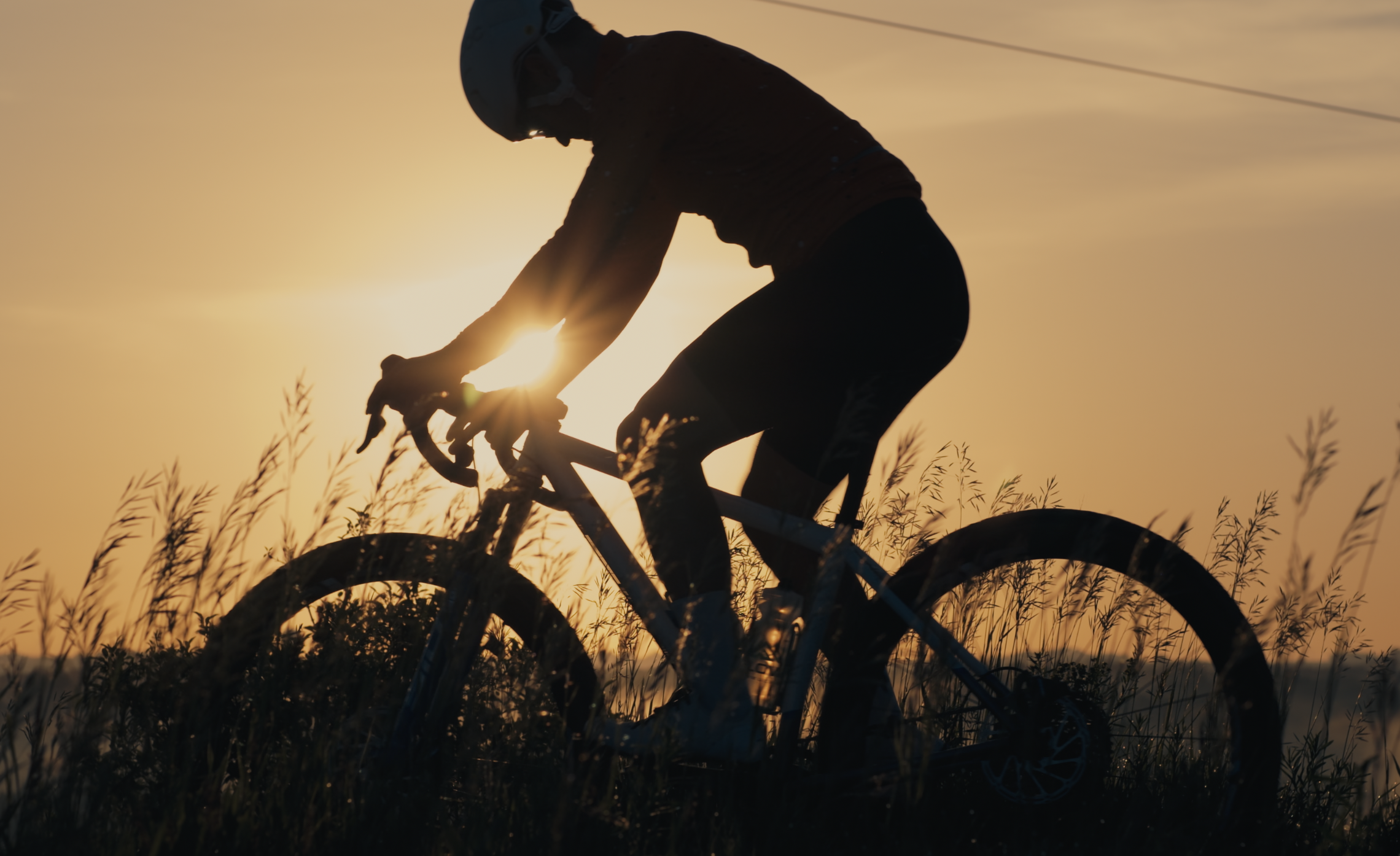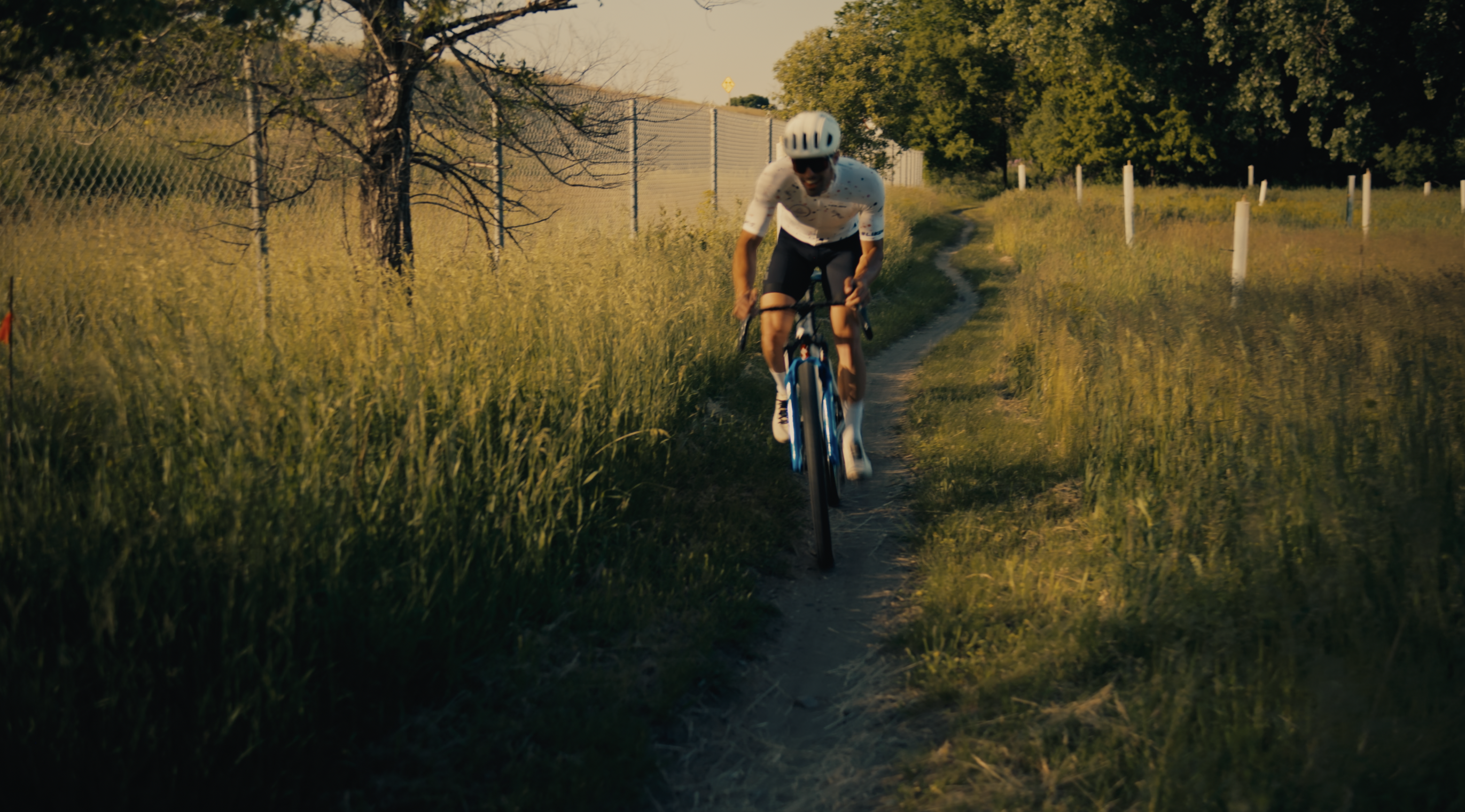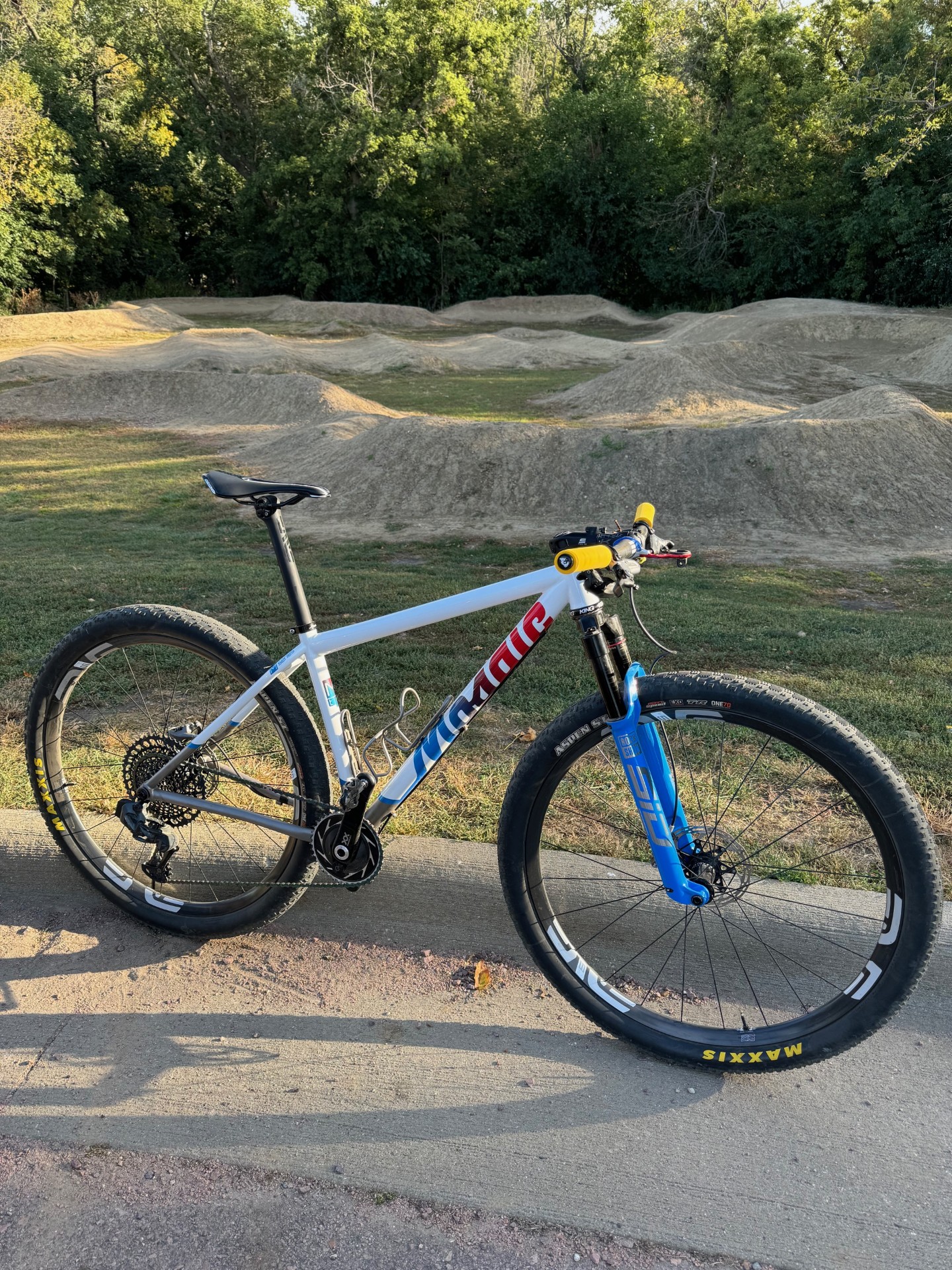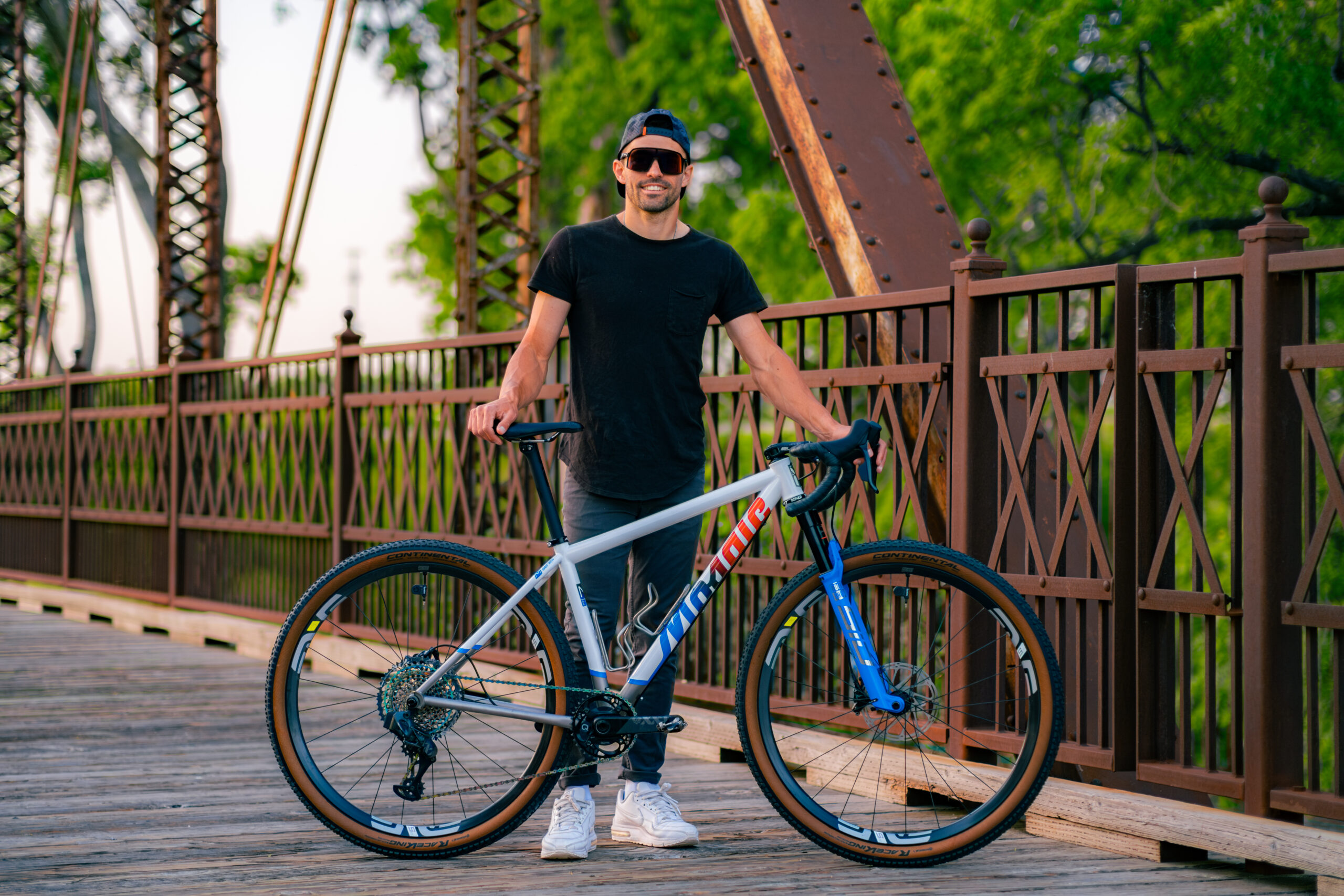Raw titanium. Exquisite welds. Clean single‑color knockouts and signature fades in every hue imaginable. These are the hallmarks of Mosaic’s finish program, beloved by riders who appreciate understated elegance. But some riders look for more—a frame that feels like a rolling canvas, where bold patterns, complex paint techniques, and pure individualism come together. For them, there’s the Mosaic Artist Series.
Developed entirely in-house, these finishes go beyond traditional paint and polish, transforming our titanium frames into rideable works of art. They shift in light, reveal intricate details up close, and no two are ever alike. Each technique carries its own identity yet shares a unifying theme: limitless range. Whether rendered in striking contrasts or subtle tonal palettes, every Artist Series finish offers the freedom to create something unmistakably personal.
Today, the Artist Series includes five finishes: Prismatica, Atlas, Particulate, Scale and Nebula. Here’s what makes each one distinct:
Prismatica
Prismatica debuted as a one‑off for Chris King’s annual Open House—a challenge to create a finish that honored their newest headset color while remaining unmistakably Mosaic. The result was a riot of color contained within our clean lines: lively and vibrant up close, yet composed from afar.
Inspired by light refracting through crystal, Prismatica plays with saturation and transparency, shifting character depending on angle and light. It remains one of our most distinctive Artist Series finishes.
Atlas
Atlas explores movement through landscapes—an artistic mapping of place and self onto titanium. Developed in collaboration with Colorado artist and athlete Krysten Koehn, Atlas draws on the layered geography of the Rocky Mountains and the experience of navigating them by bike.
Abstract cartographic forms and tonal fades evoke ridgelines, valleys, and shifting alpine light. Striking in bold palettes or quietly immersive in muted tones, Atlas reflects the rider’s journey and the landscapes that shape it.
Particulate
Built on our Two Tone layout, Particulate combines a single base color—or a two‑color fade—with a splatter effect contained within the logos and inner fork blades. The splatter colors are left to the painter’s imagination: you choose the base, and we handle the rest.
Particulate is Mosaic’s take on the classic “splatter paint” look—energetic yet precisely executed. Clean masking lines keep the chaos contained, resulting in a finish that feels bold, refined, and distinctly Mosaic.
Scale
Created by Mosaic founder Aaron Barcheck, Scale reimagines the Knockout layout with a randomized stamped technique that produces rhythmic, layered texture. The effect is cohesive yet never identical—each frame a unique expression of pattern and color.
Available in multiple colorways (or customized with the Mosaic design team), Scale spans a wide spectrum: bold and primal in high‑contrast palettes, subtle and nuanced in tonal blacks and greys. It’s a finish defined by balance—refined artistry with an untamed edge.
Nebula
Nebula evokes the layered beauty of cosmic gas clouds, blending gradients and color fields into a flowing, organic pattern. Its tones appear to shift as the bike moves, revealing new depth from every angle. Whether expressed in vivid color or moody monochrome, Nebula offers an immersive canvas for riders who want a finish that feels alive.
Artistry and Performance Combined
The Artist Series is always evolving, shaped by experimentation, rider inspiration, and the constant pursuit of new techniques. Each frame takes on its own personality—sometimes vivid, sometimes restrained, always unmistakably Mosaic.
Artist Series finishes are available on any new Mosaic build and can also be applied as refinishes for existing Mosaic framesets. Whether you’re drawn to vibrant explosions of color or the quiet elegance of tonal greys, the Artist Series offers a uniquely personal way to make your Mosaic truly your own.

